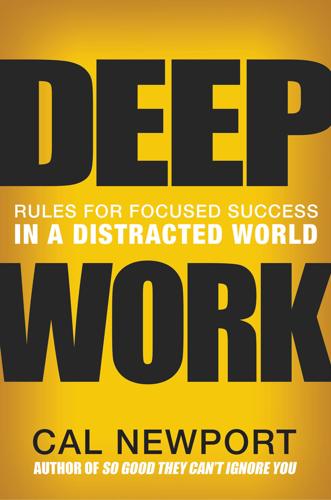
Deep Work: Rules for Focused Success in a Distracted World
by
Cal Newport
Published 5 Jan 2016
Chapter 1 Information about Nate Silver’s election traffic on the New York Times website: Tracy, Marc. “Nate Silver Is a One-Man Traffic Machine for the Times.” New Republic, November 6, 2012. http://www.newrepublic.com/article/109714/nate-silvers-fivethirtyeight-blog-drawing-massive-traffic-new-york-times. Information about Nate Silver’s ESPN/ABC News deal: Allen, Mike. “How ESPN and ABC Landed Nate Silver.” Politico, July 22, 2013. http://www.politico.com/blogs/media/2013/07/how-espn-and-abc-landed-nate-silver-168888.html. Examples of concerns regarding Silver’s methodology: Davis, Sean M. “Is Nate Silver’s Value at Risk?”
…
“Is Nate Silver’s Value at Risk?” Daily Caller, November 1, 2012. http://dailycaller.com/2012/11/01/is-nate-silvers-value-at-risk/. Marcus, Gary, and Ernest Davis. “What Nate Silver Gets Wrong.” The New Yorker, January 25, 2013. http://www.newyorker.com/online/blogs/books/2013/01/what-nate-silver-gets-wrong.html. Information about David Heinemeier Hansson comes from the following websites: • David Heinemeier Hanson. http://david.heinemeierhansson.com/. • Lindberg, Oliver. “The Secrets Behind 37signals’ Success.” TechRadar, September 6, 2010. http://www.techradar.com/us/news/internet/the-secrets-behind-37signals-success-712499
…
“Hearing a succession of mediocre singers does not add up to a single outstanding performance”: Ibid., 846. The Instagram example and its significance for labor disparities were first brought to my attention by the writing/speaking of Jaron Lanier. How to Become a Winner in the New Economy Details on Nate Silver’s tools: • Hickey, Walter. “How to Become Nate Silver in 9 Simple Steps.” Business Insider, November 14, 2012. http://www.businessinsider.com/how-nate-silver-and-fivethityeight-works-2012-11. • Silver, Nate. “IAmA Blogger for FiveThirtyEight at The New York Times. Ask Me Anything.” Reddit. http://www.reddit.com/r/IAmA/comments/166yeo/iama_blogger_for_fivethirtyeight_at_the_new_york

Strength in Numbers: How Polls Work and Why We Need Them
by
G. Elliott Morris
Published 11 Jul 2022
Blumenthal, “Polls, Forecasts, and Aggregators.” 4. Charles Franklin, interview with the author, February 3, 2021. 5. Mark Blumenthal, interview with the author, February 3, 2021. 6. Blumenthal, interview, February 3, 2021. 7. Nate Silver, “General Election Projections, Beta Version,” Daily Kos, February 26, 2008, https://www.dailykos.com/stories/2008/2/26/464643/-General-Election-Projections-Beta-Version. 8. Nate Silver (@natesilver538), “Today is the 10-year anniversary of http://FiveThirtyEight.com! Can’t believe I’ve been doing this for a decade now. Thanks to y’all for reading and here’s to 10 more years ahead,” Twitter, March 7, 2018, https://twitter.com/natesilver538/status/971422777235226624?
…
Shirani-Mehr Houshmand, David Rothschild, Sharad Goel, and Andrew Gelman, “Disentangling Bias and Variance in Election Polls,” Journal of the American Statistical Association 113 (2018): 522: 607–14. CHAPTER 7: TAKING THE PULSE OF THE PULSE OF DEMOCRACY 1. Jamelle Bouie, “There Is No Horse Race,” Slate, August 24, 2016, https://slate.com/news-and-politics/2016/08/there-is-no-clinton-trump-horce-race.html. 2. Ryan Grim, “Nate Silver Is Unskewing Polls—All of Them—in Trump’s Direction,” Huffington Post, November 5, 2016, https://www.huffpost.com/entry/nate-silver-election-forecast_n_581e1c33e4b0d9ce6fbc6f7f. 3. Nolan McCaskill, “Trump Tells Wisconsin: Victory Was a Surprise,” Politico, December 13, 2016, https://slate.com/news-and-politics/2016/08/there-is-no-clinton-trump-horce-race.html. 4.
…
As Cohn put it, “the problem is that it’s very difficult to distinguish these statements from weighting toward a desired result,” something Cohn acknowledged it was impossible to prove—but troubling because it was “totally possible.”25 Public Policy Polling is hardly the only public polling company that has been scrutinized for allegedly tweaking their methodology to stay close to polling averages. Take the case of the right-leaning pollster Rasmussen Reports, which puzzlingly deleted a poll of the 2014 Kansas Senate race from its website shortly after it was released. At the time, political blogger Harry Enten and FiveThirtyEight’s Nate Silver wondered whether the firm did so because they “got cold feet” when CNN and Fox News published polls with which Rasmussen’s was far out of line. Confronted by Enten, a representative for the firm said the numbers were actually deleted because they were “basically raw data”—unpublished numbers that hadn’t been weighted or checked for errors—that had been published inadvertently.

Outnumbered: From Facebook and Google to Fake News and Filter-Bubbles – the Algorithms That Control Our Lives
by
David Sumpter
Published 18 Jun 2018
When the victory failed to materialise, the New York Times published an article (headlined: ‘How data failed us in calling an election’) that proclaimed the number crunchers had had a rough night.3 It listed supposed problems in both their own model (the newspaper’s Upshot model had given Clinton a 91 per cent chance of winning) and the approach taken by Nate Silver and FiveThirtyEight. The newspaper was blaming statisticians for its own inability to account for uncertainty. For Silver, this was just one example of how the media finds it very difficult to write sensible articles based on probabilistic reasoning.4 What struck me, looking at how FiveThirtyEight had evolved over the past 10 years, was that the site provides a powerful case study of the limits of mathematical models. Nate Silver had been propelled to a position of authority. He had accumulated financial resources (FiveThirtyEight is owned by ESPN) that had allowed him to build sophisticated models based on large quantities of reliable data.
…
But I was falling into the same trap as Nate Silver. I was forgetting that the outcome of the US presidential election was crucial to the lives of so many people. Mona told me that the real danger is that, ‘FiveThirtyEight potentially influences voter behaviour. The millions of people visiting the site on election day aren’t reading through Nate’s model to find out how it works. These are people who are looking at those two numbers for Clinton and Trump, and they are concluding that Clinton is going to win.’ We are outnumbered by statistical experts like Nate Silver because we believe that they have a better answer than we do.
…
Also available in the Bloomsbury Sigma series: Sex on Earth by Jules Howard p53: The Gene that Cracked the Cancer Code by Sue Armstrong Atoms Under the Floorboards by Chris Woodford Spirals in Time by Helen Scales Chilled by Tom Jackson A is for Arsenic by Kathryn Harkup Breaking the Chains of Gravity by Amy Shira Teitel Suspicious Minds by Rob Brotherton Herding Hemingway’s Cats by Kat Arney Electronic Dreams by Tom Lean Sorting the Beef from the Bull by Richard Evershed and Nicola Temple Death on Earth by Jules Howard The Tyrannosaur Chronicles by David Hone Soccermatics by David Sumpter Big Data by Timandra Harkness Goldilocks and the Water Bears by Louisa Preston Science and the City by Laurie Winkless Bring Back the King by Helen Pilcher Furry Logic by Matin Durrani and Liz Kalaugher Built on Bones by Brenna Hassett My European Family by Karin Bojs 4th Rock from the Sun by Nicky Jenner Patient H69 by Vanessa Potter Catching Breath by Kathryn Lougheed PIG/PORK by Pía Spry-Marqués The Planet Factory by Elizabeth Tasker Wonders Beyond Numbers by Johnny Ball Immune by Catherine Carver I, Mammal by Liam Drew Reinventing the Wheel by Bronwen and Francis Percival Making the Monster by Kathryn Harkup Best Before by Nicola Temple Catching Stardust by Natalie Starkey Seeds of Science by Mark Lynas Contents PART 1: ANALYSING US Chapter 1: Finding Banksy Chapter 2: Make Some Noise Chapter 3: The Principal Components of Friendship Chapter 4: One Hundred Dimensions of You Chapter 5: Cambridge Hyperbolytica Chapter 6: Impossibly Unbiased Chapter 7: The Data Alchemists PART 2: INFLUENCING US Chapter 8: Nate Silver vs the Rest of Us Chapter 9: We ‘Also Liked’ the Internet Chapter 10: The Popularity Contest Chapter 11: Bubbling Up Chapter 12: Football Matters Chapter 13: Who Reads Fake News? PART 3: BECOMING US Chapter 14: Learning to be Sexist Chapter 15: The Only Thought Between the Decimal Chapter 16: Kick Your Ass at Space Invaders Chapter 17: The Bacterial Brain Chapter 18: Back to Reality Notes Acknowledgements Index PART ONE Analysing Us CHAPTER ONE Finding Banksy In March 2016, three researchers from London and a criminologist from Texas published a paper in the Journal of Spatial Science.

On the Edge: The Art of Risking Everything
by
Nate Silver
Published 12 Aug 2024
Also by Nate Silver The Signal and the Noise: Why So Many Predictions Fail—But Some Don’t PENGUIN PRESS An imprint of Penguin Random House LLC penguinrandomhouse.com Copyright © 2024 by Nate Silver Penguin Random House supports copyright. Copyright fuels creativity, encourages diverse voices, promotes free speech, and creates a vibrant culture. Thank you for buying an authorized edition of this book and for complying with copyright laws by not reproducing, scanning, or distributing any part of it in any form without permission. You are supporting writers and allowing Penguin Random House to continue to publish books for every reader.
…
As a midforties guy with a beard, backpack, and a baseball cap, I have some years to go before I fit the “Old Man Coffee” stereotype of a tight guy who only plays aces and kings—but I’m gradually aging into that demographic. And if my opponents know me as “statistician and author Nate Silver,” but don’t know my poker-playing background, they’ll usually assume my play is tight and conservative. People tend to read “statistician” as “calculating and precise,” not realizing that one can be calculating and precise about one’s bluffs. That reputation may be changing, though, because one of the poker hands I’m best known for is a bluff. Entitled “America’s Top Statistician Nate Silver Runs Epic Bluff in $10,000 Poker Tournament” on the PokerGO YouTube channel, the clip of that bluff has gotten tens of thousands of views between various social media platforms.
…
Terri Walter, “The Results Are In: 2016’s Most Engaging Stories,” Chartbeat, January 24, 2017, blog.chartbeat.com/2017/01/24/the-results-are-in-2016s-most-engaging-stories. GO TO NOTE REFERENCE IN TEXT estimate of Trump’s chances: Matthew Yglesias, “Why I Think Nate Silver’s Model Underrates Clinton’s Odds,” Vox, November 7, 2016, vox.com/policy-and-politics/2016/11/7/13550068/nate-silver-forecast-wrong. GO TO NOTE REFERENCE IN TEXT less than 1 percent: Josh Katz, “Who Will Be President?,” The New York Times, July 19, 2016, sec. The Upshot, nytimes.com/interactive/2016/upshot/presidential-polls-forecast.html.
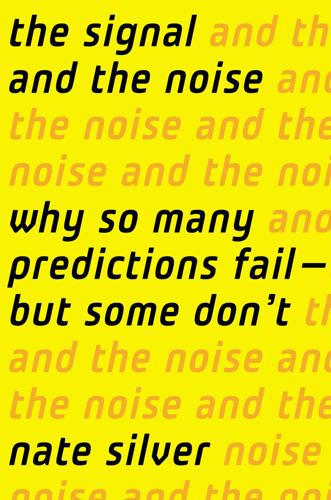
The Signal and the Noise: Why So Many Predictions Fail-But Some Don't
by
Nate Silver
Published 31 Aug 2012
“Election Results: House Big Board,” New York Times, November 2, 2010. http://elections.nytimes.com/2010/results/house/big-board. 26. Nate Silver, “A Warning on the Accuracy of Primary Polls,” FiveThirtyEight, New York Times, March 1, 2012. http://fivethirtyeight.blogs.nytimes.com/2012/03/01/a-warning-on-the-accuracy-of-primary-polls/. 27. Nate Silver, “Bill Buckner Strikes Again,” FiveThirtyEight, New York Times; September 29, 2011. http://fivethirtyeight.blogs.nytimes.com/2011/09/29/bill-buckner-strikes-again/. 28. Otherwise, you should have assigned the congressman a 100 percent chance of victory instead. 29. Matthew Dickinson, “Nate Silver Is Not a Political Scientist,” in Presidential Power: A Nonpartisan Analysis of Presidential Power, Blogs Dot Middlebury, November 1, 2010. http://blogs.middlebury.edu/presidentialpower/2010/11/01/nate-silver-is-not-a-political-scientist/. 30.
…
Douglas Harper, Online Etymology Dictionary. http://www.etymonline.com/index.php?term=objective. CHAPTER 3: ALL I CARE ABOUT IS W’S AND L’S 1. Nate Silver in Jonah Keri, et al., Baseball Between the Numbers: Why Everything You Know About the Game Is Wrong (New York: Basic Books, 2006). 2. Danny Knobler, “The Opposite of a ‘Tools Guy,’ Pedroia’s Simply a Winner,” CBSSports.com, November 18, 2008. http://www.cbssports.com/mlb/story/11116048. 3. Nate Silver, “Lies, Damned Lies: PECOTA Takes on Prospects, Wrap-up,” BaseballProspectus.com, March 8, 2006. http://www.baseballprospectus.com/article.php?
…
Per interview with Billy Beane. 21. Nate Silver, “What Tim Geithner Can Learn from Baseball,” Esquire, March 11, 2009. http://www.esquire.com/features/data/mlb-player-salaries-0409. 22. As a result of my original agreement in 2003 and a subsequent agreement in 2009, Baseball Prospectus now fully owns and operates PECOTA. Beginning with the 2010 season, the PECOTA forecasts reflect certain changes, improvements, and departures from my original methodology. The methods I describe herein apply to the 2003–2009 version of PECOTA specifically. 23. Nate Silver, “PECOTA Takes on the Field,” Baseball Prospectus, January 16, 2004. http://www.baseballprospectus.com/article.php?
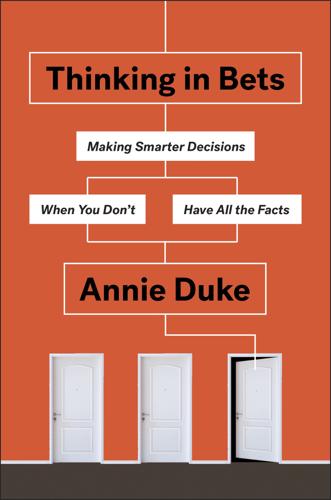
Thinking in Bets
by
Annie Duke
Published 6 Feb 2018
Hillary Clinton had been favored going into the election, and her probability of winning, based on an accumulation of the polls, was somewhere between 60% and 70%, according to FiveThirtyEight.com. When Donald Trump won, pollsters got the Pete Carroll treatment, maybe no one more than Nate Silver, founder of FiveThirtyEight.com and a thoughtful analyzer of polling data. (“Nate Silver was wrong.” “The pollsters missed it.” “Just like Brexit, the bookies blew it.” Etc.) The press spun this as a certain win for Clinton, despite the Trump branch of the tree being no mere twig at 30%–40%. By the day after the election, the Clinton branch had been severed, only the Trump branch remained, and how could pollsters and the polling process have been so blind?
…
Mistaking Odds for Wrong When the Underdog Wins,” Huffington Post, September 21, 2016, http://www.huffingtonpost.com/annie-duke/even-dershowitz-mistaking_b_12120592.html. Nate Silver and his website, FiveThirtyEight.com, bore the brunt of the criticism for pollsters and forecasters after the 2016 presidential election. Silver’s site updated, in real time, polling and forecasting data on the election and had (depending on the date) the probability of a Clinton victory at approximately 60%–70%. If you Google (without the quotation marks) “Nate Silver got it wrong election,” 465,000 results come up. Politico’s November 9 headline was “How Did Everyone Get It So Wrong?
…
Politico’s November 9 headline was “How Did Everyone Get It So Wrong?,” http://www.politico.com/story/2016/11/how-did-everyone-get-2016-wrong-presidential-election-231036. Gizmodo.com jumped on Silver even before the election, in a November 4 article by Matt Novak titled “Nate Silver’s Very Very Wrong Predictions About Donald Trump Are Terrifying,” http://paleofuture.gizmodo.com/nate-silvers-very-very-wrong-predictions-about-donald-t-1788583912, including the declaration, “Silver has no f**king idea.” CHAPTER 2: WANNA BET? Hearing is believing: The quote about baldness is from Susan Scutti, “Going Bald Isn’t Your Mother’s Fault; Maternal Genetics Are Not to Blame,” Medical Daily, May 18, 2015, http://www.medicaldaily.com/going-bald-isnt-your-mothers-fault-maternal-genetics-are-not-blame-333668.
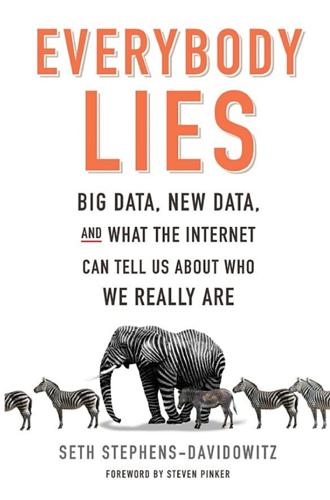
Everybody Lies: Big Data, New Data, and What the Internet Can Tell Us About Who We Really Are
by
Seth Stephens-Davidowitz
Published 8 May 2017
In the previous three elections, the candidate who appeared first in more searches received the most votes. More interesting, the order the candidates were searched was predictive of which way a particular state would go. The order in which candidates are searched also seems to contain information that the polls can miss. In the 2012 election between Obama and Republican Mitt Romney, Nate Silver, the virtuoso statistician and journalist, accurately predicted the result in all fifty states. However, we found that in states that listed Romney before Obama in searches most frequently, Romney actually did better than Silver had predicted. In states that most frequently listed Obama before Romney, Obama did better than Silver had predicted.
…
Trump, a man who retweeted a false claim that black people are responsible for the majority of murders of white Americans, defended his supporters for roughing up a Black Lives Matters protester at one of his rallies, and hesitated in repudiating support from a former leader of the Ku Klux Klan. The same hidden racism that hurt Barack Obama helped Donald Trump. Early in the primaries, Nate Silver famously claimed that there was virtually no chance that Trump would win. As the primaries progressed and it became increasingly clear that Trump had widespread support, Silver decided to look at the data to see if he could understand what was going on. How could Trump possibly be doing so well?
…
It explains, as discussed earlier, why Obama’s vote totals in 2008 and 2012 were depressed in many regions. It also correlates with the black-white wage gap, as a team of economists recently reported. The areas that I had found make the most racist searches, in other words, underpay black people. And then there is the phenomenon of Donald Trump’s candidacy. As noted in the introduction, when Nate Silver, the polling guru, looked for the geographic variable that correlated most strongly with support in the 2016 Republican primary for Trump, he found it in the map of racism I had developed. That variable was searches for “nigger(s).” Scholars have recently put together a state-by-state measure of implicit prejudice against black people, which has enabled me to compare the effects of explicit racism, as measured by Google searches, and implicit bias.
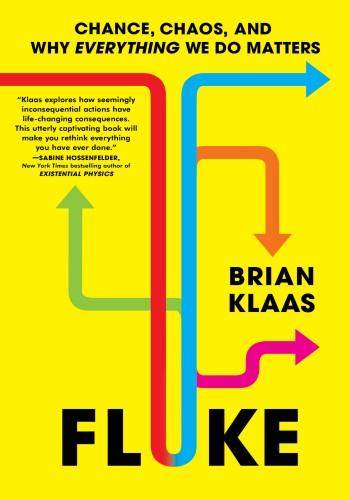
Fluke: Chance, Chaos, and Why Everything We Do Matters
by
Brian Klaas
Published 23 Jan 2024
“detracts from good decision-making”: Interview with Sir Mervyn King, Octavian Report, https://octavianreport.com/article/mervyn-king-on-radical-uncertainty/. deliberately bias the results: This is sometimes called wet bias, and it’s discussed in Nate Silver, The Signal and the Noise: The Art and Science of Prediction (New York: Penguin, 2013). Nate Silver forecasted: “Who Will Win the Presidency?,” FiveThirtyEight, 8 November 2016, https://projects.fivethirtyeight.com/2016-election-forecast/. Ian Hacking explains: Ian Hacking, The Emergence of Probability: A Philosophical Study of Early Ideas about Probability Induction and Statistical Inference (Cambridge: Cambridge University Press, 2006); Ian Hacking, An Introduction to Probability and Inductive Logic (Cambridge: Cambridge University Press, 2002); and Ian Hacking, The Taming of Chance (Cambridge: Cambridge University Press, 1990).
…
sex-offender politician’s: Adam Goldman and Alan Rappeport, “Emails in Anthony Weiner Inquiry Jolt Hillary Clinton’s Campaign,” New York Times, 28 October 2016. Silver pointed to his model: For Silver’s evaluation of his 2016 model, see Nate Silver, “The Real Story of 2016,” FiveThirtyEight, 19 January 2017. See also Isaac Faber, “Why You Should Care about the Nate Silver vs. Nassim Taleb Twitter War,” Towards Data Science, 17 December 2018. strong-link problem: Chris Anderson and David Sally, The Numbers Game: Why Everything You Know about Football Is Wrong (New York: Penguin, 2014). psychologist Adam Mastroianni: Adam Mastroianni, “Science Is a Strong-Link Problem,” Experimental History, 11 April 2023.
…
CHAPTER 6 HERACLITUS RULES The limits of probability in a complex, ever-changing world Sentient beings, including humans, are prediction machines. Our survival depends on it. The decision to forage, fight, or take flight are all based on attempts to calculate the unknown. Even without numbers, sophisticated logic, or Nate Silver, animals make informed guesses about the future that are shaped by their experiences. So do we. Every experience in our lives becomes a neurological data point, processed by the pinkish-gray computer within our skulls. When something unexpected happens, networks of neurons adjust slightly. That’s how we navigate the world.

Dataclysm: Who We Are (When We Think No One's Looking)
by
Christian Rudder
Published 8 Sep 2014
If men from such different environments as Mississippi and Massachusetts are looking for gay porn at equal rates, that’s strong evidence that supposed external forces have little effect on same-sex attraction. The second implication of the state-by-state sameness in the data—that is, what it reveals not so much about gay people but about intolerance—needs a little time to unfurl. In early 2013, when he was still covering politics for the Times, Nate Silver applied his famous poll-modeling technique to same-sex-marriage ballot initiatives across the country. As he had done in the presidential elections, he aggregated data to get a snapshot of public opinion in each state, and then he performed some forward-looking analysis to guess how those attitudes might evolve.
…
On the other, it means that for every person picking up and moving to a San Francisco or a New York City to live life fully, there are likely dozens still living in self-negation. If you accept these two independent estimates of 5 percent, arrived at using three of the biggest forces in modern data—Nate Silver, Google, and Facebook, with an assist from that standby of old-school polling, Gallup—you begin to see those self-reported numbers in a different light. When Gallup tells us that, for example, 1.7 percent of North Dakotans are gay, then perhaps something like 3.3 percent of the state is gay and unwilling to acknowledge it.
…
That said, for all the crassness of sexual-identity-as-business-plan, it’s a hopeful sign when a minority identity is something the mainstream thinks is worth co-opting instead of suppressing. Indeed, for sexuality, we see that things are changing, and quickly. Devising the projections we looked at above, Nate Silver clocked a marked change in American attitudes in the last decade. Acceptance of gay marriage accelerated markedly in 2004—and he determined, “One no longer needs to make optimistic assumptions to conclude that same-sex marriage supporters will probably soon constitute a national majority.” Thus, it all comes back to counting, and the fraction is going our way.

Superforecasting: The Art and Science of Prediction
by
Philip Tetlock
and
Dan Gardner
Published 14 Sep 2015
At best, they have vague hunches. That’s because the forecast-measure-revise procedure operates only within the rarefied confines of high-tech forecasting, such as the work of macroeconomists at central banks or marketing and financial professionals in big companies or opinion poll analysts like Nate Silver.7 More often forecasts are made and then … nothing. Accuracy is seldom determined after the fact and is almost never done with sufficient regularity and rigor that conclusions can be drawn. The reason? Mostly it’s a demand-side problem: The consumers of forecasting—governments, business, and the public—don’t demand evidence of accuracy.
…
A forecaster who followed a mindless rule like, “always assign 100% to hot and sunny” could get a Brier score close to 0, leaving 0.2 in the dust. Here, the right test of skill would be whether a forecaster can do better than mindlessly predicting no change. This is an underappreciated point. For example, after the 2012 presidential election, Nate Silver, Princeton’s Sam Wang, and other poll aggregators were hailed for correctly predicting all fifty state outcomes, but almost no one noted that a crude, across-the-board prediction of “no change”—if a state went Democratic or Republican in 2008, it will do the same in 2012—would have scored forty-eight out of fifty, which suggests that the many excited exclamations of “He called all fifty states!”
…
Aggregating the judgments of people who know a little is better, and if there are enough of them, it can produce impressive results, but aggregating the judgments of an equal number of people who know lots about lots of different things is most effective because the collective pool of information becomes much bigger. Aggregations of aggregations can also yield impressive results. A well-conducted opinion survey aggregates a lot of information about voter intentions, but combining surveys—a “poll of polls”—turns many information pools into one big pool. That’s the core of what Nate Silver, Sam Wang, and other statisticians did in the presidential election of 2012. And a poll of polls can be further aggregated with other data sources. PollyVote is a project of an academic consortium that forecasts presidential elections by aggregating diverse sources, including election polls, the judgments of a panel of political experts, and quantitative models developed by political scientists.

Predictive Analytics: The Power to Predict Who Will Click, Buy, Lie, or Die
by
Eric Siegel
Published 19 Feb 2013
TIME Magazine, November 07, 2012. http://swampland.time.com/2012/11/07/inside-the-secret-world-of-quants-and-data-crunchers-who-helped-obama-win/. Colbert Nation, www.colbertnation.com. Stephen Colbert interviews Nate Silver, New York Times blogger about his book, The Signal and the Noise: Why So Many Predictions Fail—but Some Don’t. http://www.colbertnation.com/the-colbert-report-videos/420765/november-05-2012/nate-silver. Peggy Noonan, “They’ve Lost That Lovin’ Feeling.” Wall Street Journal, July 30, 2011. http://online.wsj.com/article/SB10001424053111904800304576474620336602248.html. Jack Gillum, “Mitt Romney Uses Secretive Data Mining To Identify Wealthy Donors.”
…
A Faulty Oracle Everyone Loves The first step toward predicting the future is admitting you can’t. —Stephen Dubner, Freakonomics Radio, March 30, 2011 The “prediction paradox”: The more humility we have about our ability to make predictions, the more successful we can be in planning for the future. —Nate Silver, The Signal and the Noise: Why So Many Predictions Fail—but Some Don’t Half of what we will teach you in medical school will, by the time you are done practicing, be proved wrong. —Dr. Mehmet Oz Your resident “oracle,” PA, tells you which customers are most likely to respond. It earmarks a quarter of the entire list and says, “These folks are three times more likely to respond than average!”
…
However, they kept at it, squeezing every drop of potential out of their brainshare and data, right up until the final weeks before the big match. Confidence without Overconfidence Both experts and laypeople mistake more confident predictions for more accurate ones. But overconfidence is often the reason for failure. If our appreciation of uncertainty improves, our predictions can get better too. —Nate Silver, The Signal and the Noise: Why So Many Predictions Fail—but Some Don’t The trouble with the world is that the stupid are cocksure and the intelligent are full of doubt. —Bertrand Russell You got to know when to hold ‘em, know when to fold ‘em. —Don Schlitz, “The Gambler” (sung by Kenny Rogers) Jeopardy!
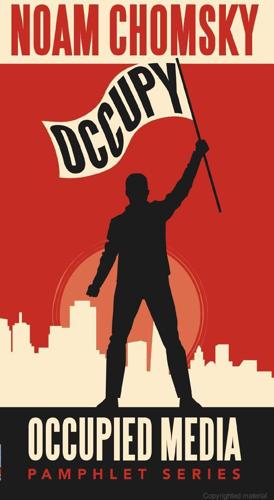
Occupy
by
Noam Chomsky
Published 2 Jan 1994
—Greg Ruggiero April 27, 2012 * Rich Morin, “Rising Share of Americans See Conflict Between Rich and Poor,” Pew Research Center, January 11, 2012. † OccupyArrests.com posts a running total of how many Occupy protesters have been arrested since September 17, 2011, and when and where in the United States the arrests took place. ‡ Nate Silver, “Why Obama Will Embrace the 99 Percent,” New York Times, published online February 15, 2012. http://www.nytimes.com/2012/02/19/magazine/nate-silver-obama-reelection-chances.html?hp § Dan Barry, “In Fuel Oil Country, Cold That Cuts to the Heart,” New York Times, February 3, 2012. ¶ Charles M. Blow, “Romney, the Rich and the Rest,” New York Times, February 3, 2012, citing Richard Kogan and Paul N.

Why We're Polarized
by
Ezra Klein
Published 28 Jan 2020
Lamar Smith of Texas,” Vox, January 27, 2017, vox.com/science-and-health/2017/1/27/14395978/donald-trump-lamar-smith. 16 David Hookstead, “This Sexy Model Is Blowing Up the Internet [SLIDESHOW],” Daily Caller, December 16, 2016, dailycaller.com/2016/12/16/this-sexy-model-is-blowing-up-the-internet-slideshow/; David Hookstead, “This UFC Octagon Girl’s Instagram Account Is Sizzling Hot [SLIDESHOW],” Daily Caller, December 24, 2016, dailycaller.com/2016/12/24/this-ufc-octagon-girls-instagram-account-is-sizzling-hot-slideshow/; Kaitlan Collins, “13 Syrian Refugees We’d Take Immediately [PHOTOS],” Dailey Caller, November 18, 2015, dailycaller.com/2015/11/18/13-syrian-refugees-wed-take-immediately-photos/. 17 Jonathan A. Rodden, Why Cities Lose: The Deep Roots of the Urban-Rural Political Divide (New York: Basic Books, 2019). 18 Ezra Klein, “What Nate Silver’s Learned Abouty Forecasting Elections,” Vox, October 23, 2018, vox.com/ezra-klein-show-podcast/2018/10/23/18014156/nate-silver-538-forecasting-2018-2020-ezra-klein-podcast. 19 Osita Nwanevu, “How Much Do Democrats Need to Win By?” Slate, March 27, 2018, slate.com/news-and-politics/2018/03/how-much-do-democrats-need-to-win-by.html. 20 Michael Geruso, Dean Spears, and Ishaana Talesara, “Inversions in US Presidential Elections: 1836–2016,” National Bureau of Economics Research, Working Paper No. 26247 (September 2019), nber.org/papers/w26247. 21 “Morning Consult’s Governor Approval Rankings,” Morning Consult, Q2 2019, morningconsult.com/governor-rankings-q2-19/. 22 Theda Skocpol and Vanessa Williamson, The Tea Party and the Remaking of Republican Conservatism (New York: Oxford University Press, 2012). 23 Publius Decius Mus [Michael Anton], “The Flight 93 Election,” Claremont Review of Books, September 5, 2016, claremont.org/crb/basicpage/the-flight-93-election. 24 Megan Brenan, “Democrats Favor More Moderate Party; GOP, More Conservative,” Gallup, December 12, 2018, news.gallup.com/poll/245462/democrats-favor-moderate-party-gop-conservative.aspx.
…
I launched Wonkblog, the online policy vertical at the Washington Post, and I was a cofounder and the first editor in chief of the explanatory news organization Vox, which now reaches more than 50 million people each month. When I was launching Vox, I often got asked who our competitors were.I The answer people expected me to give was other politics-heavy news and analysis sites. The Atlantic. Nate Silver’s FiveThirtyEight. The Washington Post. But the truth was that other news sites were less competitors than they were collaborators in a shared effort to engage people in politics. If Silver converted a sports fan into a politics junkie, that person became instantly more likely to read Vox’s political coverage.
…
My point here is not that this is unjust, though I believe it is. Instead, I want to focus on the way this system restrains polarization among Democrats and unleashes it among Republicans. To win, Democrats don’t just need to appeal to the voter in the middle. They need to appeal to voters well to the right of the middle. In the Senate, FiveThirtyEight’s Nate Silver estimates the average state is six points more Republican than the average voter.18 So when Democrats compete for the Senate, they are forced to appeal to an electorate that is far more conservative than the country as a whole. Similarly, it’s estimated that Democrats need to win a substantial majority in the House popular vote to take the gavel.19 And the fact that Democrats have lost two of the last five presidential elections due to the electoral college—the only times that’s happened in American history—signals a growing imbalance there also.

Hate Inc.: Why Today’s Media Makes Us Despise One Another
by
Matt Taibbi
Published 7 Oct 2019
The presidential election especially was reconfigured into a sports coverage saga. It was perfect: eighteen months of scheduled contests, a preseason (straw polls), regular season (primaries), and playoffs (the general), stadium events, a sub-genre of data reporting (it’s not an accident that sabermetrics guru Nate Silver fit so seamlessly into political coverage). TV news stations baldly copied visual “live variety” sports formats for coverage of primary elections, debates, election night, and soon enough, Sunday “discussion” shows like Meet the Press. If you’ve noticed, the sets bear an eerie resemblance to NFL pre-game shows.
…
The flip side of the Bias con—why it works, despite its pretty transparent stupidity—is that most working journalists are too self-serious to admit the true part of it. We constantly validate right-wing caricatures of us as humorless upper-class snobs. Here’s the argument espoused by most working reporters on the Why Do They Hate Us? debate: 1.Most of the distrust of the media is found among conservatives. Statistician/poll guru Nate Silver, a onetime baseball stats nerd who has somehow become the High Data Mullah of All Things since he began writing about politics, summed it up in simple terms. “Republicans hate the media a lot, and Democrats hate the media a little.” 2.Those discontented Republican voters, the thinking goes, are really upset because they just can’t deal with reality.
…
He had no “ground game,” a characteristic normally cited as a crucial factor. He was also an adulterer and ignorant of the Bible, running in a primary whose constituents supposedly treasured religion. By every conceivable standard of conventional wisdom, Trump had no shot. Even data journalists laughed at the notion that he could win.1 Nate Silver, the former baseball stats guru turned National Oracle™ (as Gizmodo called him), said Trump had a better shot of “cameoing in another Home Alone movie with Macaulay Culkin (or playing in the NBA Finals) than winning the Republican nomination.” But he won anyway. This should have proved “electability” was a crock, and killed it forever as a form of campaign analysis.
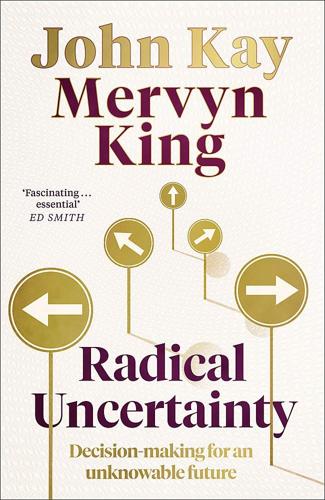
Radical Uncertainty: Decision-Making for an Unknowable Future
by
Mervyn King
and
John Kay
Published 5 Mar 2020
And with good reason, as we will now see. The probability of an attack on the Twin Towers ‘We may treat people as if they assigned numerical probabilities to every conceivable event.’ So what was the probability that terrorists would fly passenger planes into the World Trade Center on 11 September 2001? Nate Silver, a well-known political pundit in the United States and a devotee of subjective probabilities and Bayesian reasoning, has attempted to answer that question. According to Silver, ‘most of us would have assigned almost no probability to terrorists crashing planes into buildings in Manhattan when we woke up that morning . . .
…
If you crumple a piece of paper, it makes some shape; but the probability that it would make that particular shape is infinitesimally low. 14 It would be absurd, or at least trivial, to conclude that one has observed a 25 standard deviation occurrence. Crimes are rare and unique events. In chapter 5 we saw Nate Silver fail to make sense of the question ‘What is the probability that an unlikely and unique event would occur?’ when we know that the event has in fact happened. Silver was writing in the context of the attack on the World Trade Center; David Viniar struggled similarly in relation to probabilities in the global financial crisis.
…
But this confronts the pollsters, and those who want to use their results, with the Viniar problem: the probability derived from the model has to be compounded with the probability that the model is itself true. We can usefully say things like ‘the pollsters are very experienced’, or ‘the model has worked well in the past’ – as we could of Nate Silver before 2016. But these are judgements, not statements about probabilities. It is thus very difficult to justify the attachment of a statistical confidence interval to an opinion poll result. Nor is this the last of the problems. The answer to a question about voting intentions needs to be translated into a prediction of voting behaviour.

The Great Reset: How the Post-Crash Economy Will Change the Way We Live and Work
by
Richard Florida
Published 22 Apr 2010
Yuri Kageyama, “Car-Free: In Japan, That’s How a Generation Rolls,” Associated Press, January 6, 2009. 15. Rich Morin and Paul Taylor, “Luxury or Necessity? The Public Makes a U-Turn,” Pew Research Center, April 23, 2009, retrieved from http://pewsocialtrends.org/pubs/733/luxury-necessity-recession-era-reevaluations. 16. Nate Silver, “The End of Car Culture,” Esquire, May 6, 2009, retrieved from www.esquire.com/features/data/nate-silver-car-culture-stats-0609. 17. Martin Zimmerman, “Rebel without a Car?” Los Angeles Times, October 8, 2009, retrieved from http://latimesblogs.latimes.com/uptospeed/2009/10/james-dean-.html. 18. Micheline Maynard, “Is Happiness Still That New Car Smell?”
…
The highest-ranked necessity was a car: 88 percent of people surveyed named it as a necessity.15 That may seem like a lot, but in a society where there are two cars or more for every family and where suburban life literally requires a car to accomplish life’s most basic tasks, 12 percent of people believing that it’s no longer a necessity seems like a substantial number. The statistics guru Nate Silver, writing in Esquire, says there is hard evidence that America’s once-great car culture has peaked. Silver performed a statistical analysis to show how much Americans drive based on gas prices and unemployment. He then graphed the results from 1980 to 2009. “Americans should have driven slightly more in January 2009 than they had a year earlier,” he found, pointing to sharply lower gas prices as the overriding factor.

The Behavioral Investor
by
Daniel Crosby
Published 15 Feb 2018
Several experiments suggest that when those presented with an extensive array of options make fewer purchases and are less happy with the purchases they make than those operating from a more limited decisional universe. Another consequence of financial information overload is that it leads to drawing spurious correlations between variables. As Nate Silver reports, the government produces data on 45,000 economic variables each year!44 Pair this reality with the fact that there are relatively few dramatic economic events (e.g., there have been 11 recessions since the end of World War II) and you get what Silver refers to as putting data into a blender and calling the result haute cuisine.
…
Noise is what makes markets possible. It is also what makes them almost impossible to beat. Notes 42 Zweig, Your Money and Your Brain, p. 22. 43 Greg B. Davies, Behavioral Investment Management: An Efficient Alternative to Modern Portfolio Theory (McGraw-Hill, 2012), p. 53. 44 Nate Silver, The Signal and the Noise: Why So Many Predictions Fail – but Some Don’t (Penguin, 2015), p. 185. Chapter 7. Emotion “The world is a tragedy to those who feel, but a comedy to those who think.” — Horace Walpole Emotion: friend or foe? It must be stated from the outset that there is some disagreement within the behavioral finance community about whether emotion is a help or hindrance when making investment decisions.
…
Not only did the simple model outperform the psychologists’ intuition head-to-head, but it also bested psychologists who were given access to the model.109 Models have also been shown to outperform human intuition in predicting the outcomes of Supreme Court decisions,110 Presidential elections (Nate Silver), movie preferences, prison recidivism, wine quality, marital satisfaction and military success, to name just a few of the over 45 domains in which they have demonstrated their superiority.111 A meta-analysis performed by William Grove, David Zald, Boyd Lebow, Beth Snitz and Chad Nelson found that models equal or beat expert decision-making a whopping 94.12% of the time, meaning that they are only defeated by human discretion 5.88% of the time.112 Moreover, many of the domains in which algorithms greatly outperformed had human behavior as a central component (as do financial markets).
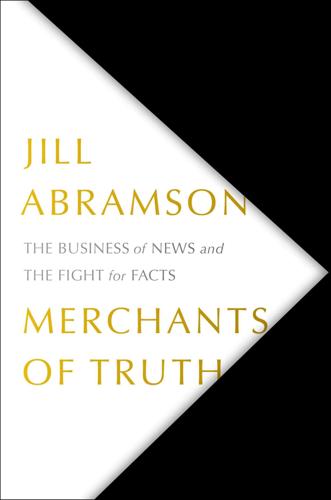
Merchants of Truth: The Business of News and the Fight for Facts
by
Jill Abramson
Published 5 Feb 2019
So it wasn’t surprising that the Post: Tom McCarthy, “Washington Post’s Ezra Klein Leaving Newspaper to Start ‘New Venture,’ ” Guardian, January 21, 2014, https://www.theguardian.com/media/2014/jan/21/washington-posts-ezra-klein-leaving-news-organisation. The Times too lost Silver: John McDuling, “ ‘The Upshot’ Is the New York Times’ Replacement for Nate Silver’s FiveThirtyEight,” Quartz, March 10, 2014, https://qz.com/185922/the-upshot-is-the-new-york-times-replacement-for-nate-silvers-fivethirtyeight/. There were bound to be problems: Trevor Butterworth, “The Latest Sad Fate of an Aggregation Serf,” Awl, April 24, 2012, https://www.theawl.com/2012/04/the-latest-sad-fate-of-an-aggregation-serf/. One story BlogPOST recycled: Patrick B.
…
After the financial crisis, she argued, the last thing the Times needed was to go soft on Wall Street. But DealBook, replete with a conference headlined by Sorkin, launched with the publisher’s keen support, despite the objections from Morgenson and others who saw the venture as driven more by financial than journalism goals. Nate Silver, a popular political blogger who created FiveThirtyEight, licensed his site to the Times, and alongside Sorkin would come to represent a new breed of reporter, better known as individuals than belonging to the institution. Both stars negotiated special pay-for-performance packages under a new system that Sulzberger and Robinson had installed.
…
They would edit the information and present coherent information bullets on individual “cards.” Readers loved them. Many people thought Klein had the best coverage of President Obama’s complex health overhaul. Klein’s fluid writing and original takes quickly made Wonkblog a major attraction on WashingtonPost.com. Like Nate Silver, who had established his FiveThirtyEight blog before he joined the Times, Klein attracted a different audience to the Post. But also like Silver, Klein wanted to be his own brand. He was allowed to hire a staff of eight, while the rest of the staffing at the Post tightened. As his blog became better known, he also appeared in the New Yorker and on CNN.
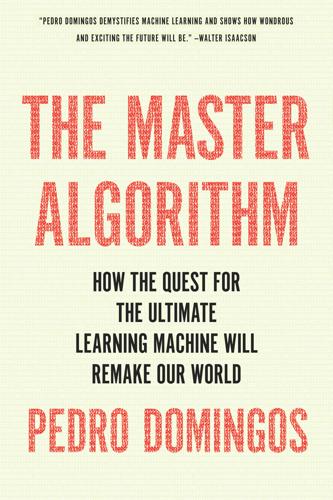
The Master Algorithm: How the Quest for the Ultimate Learning Machine Will Remake Our World
by
Pedro Domingos
Published 21 Sep 2015
They could see the other side buying ads in particular cable stations in particular towns but couldn’t tell why; their crystal ball was too fuzzy. In the end, Obama won every battleground state save North Carolina and by larger margins than even the most accurate pollsters had predicted. The most accurate pollsters, in turn, were the ones (like Nate Silver) who used the most sophisticated prediction techniques; they were less accurate than the Obama campaign because they had fewer resources. But they were a lot more accurate than the traditional pundits, whose predictions were based on their expertise. You might think the 2012 election was a fluke: most elections are not close enough for machine learning to be the deciding factor.
…
Either way, to obtain a learner’s prediction for a given training example, we must first apply it to the original training set excluding that example and use the resulting classifier—otherwise the committee risks being dominated by learners that overfit, since they can predict the correct class just by remembering it. The Netflix Prize winner used metalearning to combine hundreds of different learners. Watson uses it to choose its final answer from the available candidates. Nate Silver combines polls in a similar way to predict election results. This type of metalearning is called stacking and is the brainchild of David Wolpert, whom we met in Chapter 3 as the author of the “no free lunch” theorem. An even simpler metalearner is bagging, invented by the statistician Leo Breiman.
…
(Science, 2009). Sasha Issenberg’s The Victory Lab (Broadway Books, 2012) dissects the use of data analysis in politics. “How President Obama’s campaign used big data to rally individual votes,” by the same author (MIT Technology Review, 2013), tells the story of its greatest success to date. Nate Silver’s The Signal and the Noise (Penguin Press, 2012) has a chapter on his poll aggregation method. Robot warfare is the theme of P. W. Singer’s Wired for War (Penguin, 2009). Cyber War, by Richard Clarke and Robert Knake (Ecco, 2012), sounds the alarm on cyberwar. My work on combining machine learning with game theory to defeat adversaries, which started as a class project, is described in “Adversarial classification,”* by Nilesh Dalvi et al.
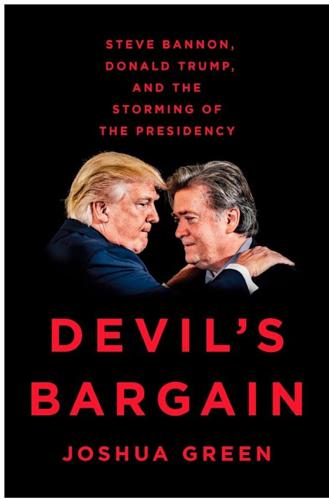
Devil's Bargain: Steve Bannon, Donald Trump, and the Storming of the Presidency
by
Joshua Green
Published 17 Jul 2017
“We’re gonna go buck wild”: Joshua Green, “Trump to Intensify Attacks on Clinton over Husband’s Accusers,” Bloomberg.com, October 12, 2016, www.bloomberg.com/politics/articles/2016-10-12/trump-takes-a-back-to-the-future-focus-on-bill-clinton-s-women. “Is the Presidential Race Tightening?”: Nate Silver, “Election Update: Is the Presidential Race Tightening?,” FiveThirtyEight, New York Times, October 26, 2016, fivethirtyeight.com/features/election-update-is-the-presidential-race-tightening/. “Yes, Donald Trump Has a Path to Victory”: Nate Silver, “Election Update: Yes, Donald Trump Has a Path to Victory,” FiveThirtyEight, New York Times, November 1, 2016, fivethirtyeight.com/features/election-update-yes-donald-trump-has-a-path-to-victory/.
…
But the data were noisy. In some states (Indiana, New Hampshire, Arizona) his support eroded, but in others (Florida, Ohio, Michigan) it actually improved. When Trump held his own at the third and final debate on October 19, the numbers inched up further. The movement was clear enough that Nate Silver and other statistical mavens began to take note of it. “Is the Presidential Race Tightening?” he asked in the title of an October 26 article. Citing Trump’s rising favorability numbers among Republicans and red-state trend lines, he cautiously concluded that probably it was. By November 1, he had no doubt.

Stuffocation
by
James Wallman
Published 6 Dec 2013
Today they are only wrong by half that amount, three degrees. When hurricane forecasters predicted where a hurricane would hit land in the 1980s they were usually out by 350 miles. Today, their predictions are only wrong by 100 miles.” If you’re not ready – yet – to take on all of Nate Silver’s The Signal and the Noise, read Nate Silver, “The Weatherman Is Not a Moron”, New York Times, 7 September 2012. The Farm Where the Corn Did Not Grow Tall For Everett Rogers’s version of his life, read Everett M Rogers, The Fourteenth Paw (Singapore: Asian Media Information and Communication Centre, 2008).
…
Forecasts Are Not Facts, They Are Maps For Nassim Nicholas Taleb’s dismal view of forecasting, read Nassim Nicholas Taleb, The Black Swan (New York: Penguin, 2007). The story of the turkey is borrowed, as Taleb notes, from the philosopher Bertrand Russell. Using the Past to Tell the Future I am indebted to three sources for this section: Peter N Stearns, “Why Study History?”, American Historical Association, 1998; Nate Silver, The Signal and the Noise (New York: Allen Lane, 2012); and Rob Hyndman, “Why are some things easier to forecast than others?”, 18 September 2012, on his blog, Hyndsight (www.robjhyndman.com/hyndsight). “In the 1970s, the high temperature forecasts were wrong, on average, by about six degrees.

The Art of Statistics: How to Learn From Data
by
David Spiegelhalter
Published 2 Sep 2019
CODE FOR EXAMPLES R code and data for reproducing most of the analyses and Figures are available from https://github.com/dspiegel29/ArtofStatistics. I am grateful for the assistance received in preparing this material. Introduction The numbers have no way of speaking for themselves. We speak for them. We imbue them with meaning. —Nate Silver, The Signal and the Noise1 Why We Need Statistics Harold Shipman was Britain’s most prolific convicted murderer, though he does not fit the archetypal profile of a serial killer. A mild-mannered family doctor working in a suburb of Manchester, between 1975 and 1998 he injected at least 215 of his mostly elderly patients with a massive opiate overdose.
…
The choice of the start of the horizontal axis, here 86%, can have a crucial effect on the impression given by the graphic. If the axis starts at 0%, all the hospitals will look indistinguishable, whereas if we started at 95% the differences would look misleadingly dramatic. I began this book with a quotation from Nate Silver, the founder of data-based platform FiveThirtyEight and first famous for accurately predicting the 2008 US presidential election, who eloquently expressed the idea that numbers do not speak for themselves—we are responsible for giving them meaning. This implies that communication is a key part of the problem-solving cycle, and I have shown in this section how the message from a set of simple proportions can be influenced by our choices of presentation.
…
An observation with a Z-score of 3 corresponds to being 3 standard deviations above the mean, which is a fairly extreme outlier. A Z-score can also be defined in terms of a population mean μ and standard deviation σ, in which case zi = (xi–μ)/σ. Also by David Spiegelhalter The Norm Chronicles Notes INTRODUCTION 1. The Signal and the Noise by Nate Silver (Penguin, 2012) is an excellent introduction to how statistical science can be applied to making predictions in sport and other domains. 2. The Shipman data is discussed in more detail in D. Spiegelhalter and N. Best, ‘Shipman’s Statistical Legacy’, Significance 1:1 (2004), 10–12. All documents for the public inquiry are available from http://webarchive.nationalarchives.gov.uk/20090808155110/http://www.the-shipman-inquiry.org.uk/reports.asp. 3.
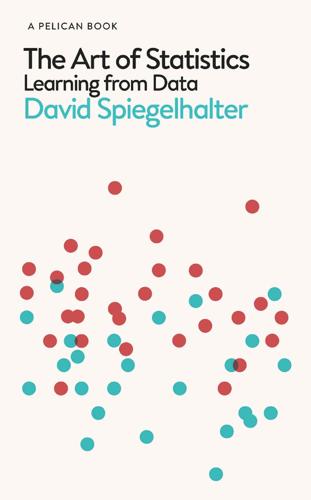
The Art of Statistics: Learning From Data
by
David Spiegelhalter
Published 14 Oct 2019
CODE FOR EXAMPLES R code and data for reproducing most of the analyses and Figures are available from https://github.com/dspiegel29/ArtofStatistics. I am grateful for the assistance received in preparing this material. Introduction The numbers have no way of speaking for themselves. We speak for them. We imbue them with meaning. — Nate Silver, The Signal and the Noise1 Why We Need Statistics Harold Shipman was Britain’s most prolific convicted murderer, though he does not fit the archetypal profile of a serial killer. A mild-mannered family doctor working in a suburb of Manchester, between 1975 and 1998 he injected at least 215 of his mostly elderly patients with a massive opiate overdose.
…
The choice of the start of the horizontal axis, here 86%, can have a crucial effect on the impression given by the graphic. If the axis starts at 0%, all the hospitals will look indistinguishable, whereas if we started at 95% the differences would look misleadingly dramatic. I began this book with a quotation from Nate Silver, the founder of data-based platform FiveThirtyEight and first famous for accurately predicting the 2008 US presidential election, who eloquently expressed the idea that numbers do not speak for themselves – we are responsible for giving them meaning. This implies that communication is a key part of the problem-solving cycle, and I have shown in this section how the message from a set of simple proportions can be influenced by our choices of presentation.
…
An observation with a Z-score of 3 corresponds to being 3 standard deviations above the mean, which is a fairly extreme outlier. A Z-score can also be defined in terms of a population mean μ and standard deviation σ, in which case zi = (xi – μ)/σ. Notes INTRODUCTION 1. The Signal and the Noise by Nate Silver (Penguin, 2012) is an excellent introduction to how statistical science can be applied to making predictions in sport and other domains. 2. The Shipman data is discussed in more detail in D. Spiegelhalter and N. Best, ‘Shipman’s Statistical Legacy’, Significance1:1 (2004), 10–12. All documents for the public inquiry are available from http://webarchive.nationalarchives.gov.uk/20090808155110/http://www.the-shipman-inquiry.org.uk/reports.asp. 3.
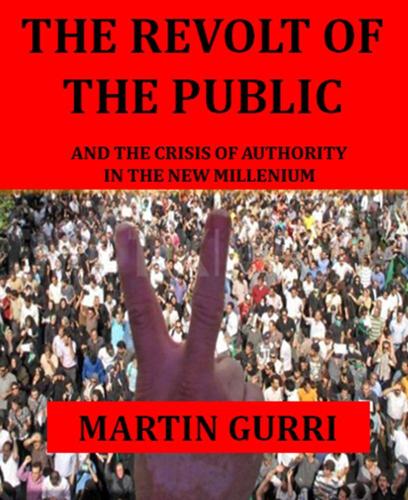
The Revolt of the Public and the Crisis of Authority in the New Millennium
by
Martin Gurri
Published 13 Nov 2018
Here was a bold attempt at prophecy by the new team of experts: in the event, it was wildly over-optimistic. Unemployment peaked at 10.1 percent after the stimulus bill passed, and didn’t touch 8 percent until late 2012 – much worse than the worst-case projections without the stimulus.[137] In human terms, the White House numbers had missed the plight of over 3 million unemployed Americans. Nate Silver offered two reasons for Romer and Bernstein’s disconcerting failure at prediction, and neither of them seemed flattering to the expert class. The first was ignorance of actual economic conditions. The economy in 2009 happened to be in far worse shape than the experts, for all their statistical wizardry, had realized.
…
[112] Dollar, “Man Who Predicted Earthquake” and Pielke, “Lessons of L’Aquila Lawsuit.” [113] Ibid. [114] “L’Aquila quake: Italy scientists guilty of manslaughter,” BBC, October 27, 2012, http://www.bbc. co.uk/news/world-europe-20025626. [115] An excellent evaluation of the state of the art in the forecasting of earthquakes is found in Nate Silver’s The Signal and the Noise: Why So Many Predictions Fail – But Some Don’t (The Penguin Press, 2012), 142-175. [116] Climategate Emails, 84. [117] Wikipedia Commons. [118] Bob Woodward, Maestro: Greenspan’s Fed and the American Boom (Simon and Schuster, 2000), Kindle location 507. [119] Ibid., Kindle location 602-609, 641
…
[193] “Public Trust in Government: 1958-2013,” Pew Research Center for the People and the Press, October 18, 2013, http://www.people-press.org/2013/10/18/trust-in-government-interactive/. [194] Ormerod belongs to a group of thinkers who in the last decade have thrown much light on the boundary conditions of what human beings can and can’t know, predict, or ordain: N. N. Taleb, Duncan Watts, James C. Scott, Philip Tetlock, Nate Silver. [195] Ormerod, Why Most Things Fail, Kindle location 66. [196] Ibid., 38. [197] Ibid., 236. [198] Ibid., 67-68. [199] Ibid., 99. [200] I urge the reader to browse the many job postings for “community organizer” on the web, which add up to a familiar portrait. [201] Melissa McEwan, “President Obama at Planned Parenthood,” Shakesville, April 26, 2013, http://www.shakesville.com/2013/04/president-obama-at-planned-parenthood.html

The New Class War: Saving Democracy From the Metropolitan Elite
by
Michael Lind
Published 20 Feb 2020
In the 2016 US presidential election, among counties with a population of fifty thousand or more, Hillary Clinton won forty-eight of the fifty counties that had the highest percentage of voters with at least a four-year bachelor’s degree. Support for her presidential bid “collapsed” (to use the pollster Nate Silver’s term) in the fifty counties with the lowest educational levels. Political differences correlated with education can be found among racial and ethnic minority populations as well.16 The same pattern is evident in Europe. In Britain, for example, the chief trait predicting support for the Leave side in the Brexit referendum in 2016 was lower educational qualifications—a trait that was more important than others, including race and ethnicity.17 Because the possession of a diploma tends to indicate birth into the economic elite, these figures manifest conflict among largely hereditary social classes, not a clash between knowledge and ignorance or intelligence and stupidity.
…
Quinn, and Kathryn Peltier Campbell, Born to Win, Schooled to Lose: Why Talented Students Don’t Get Equal Chances to Be All They Can Be, Georgetown University Center on Education and the Workforce report, 2019. 14. UNCTAD, “Annex Table 24. The World’s Top 100 Non-Financial MNE’s, Ranked by Foreign Assets, 2016.” 15. George Davis, “Boards Aren’t as Global as Their Businesses,” Harvard Business Review, October 28, 2014. 16. Nate Silver, “Education, Not Income, Predicted Who Would Vote for Trump,” FiveThirtyEight.com, November 22, 2016. 17. Martin Rosenbaum, “Local Voting Figures Shed New Light on EU Referendum,” BBC News, February 6, 2017. 18. Edna Bonacich, “A Theory of Ethnic Antagonism: The Split Labor Market,” American Sociological Review 37, no. 5 (October 1972), pp. 547–59. 19.

Mexico City Street Food: A Travel Guide for the Curious Eater. How to Safely Enjoy the Delicious Foods From the Street Vendors of Mexico City.
by
Ron Upshaw
Published 24 Nov 2015
A fresh crafted tortilla is a thing of beauty. It’s sublime in its humble simplicity. Long live the tortilla. The Author (Me) on the Left, my sister Maria, and a couple from the UK we adopted that had just arrived and were a bit overwhelmed by the language. CHAPTER 4 - BURRITO SNOBBERY. When celebrity blogger Nate Silver came out with this now famous Burrito Bracket, I followed along with great interest. It was his attempt to find the best burrito in America. They culled down the field to 64 contenders, then went from burrito place to burrito place all across the USA and eventually crowned a winner - La Taqueria’s Carnitas Burrito in San Francisco.
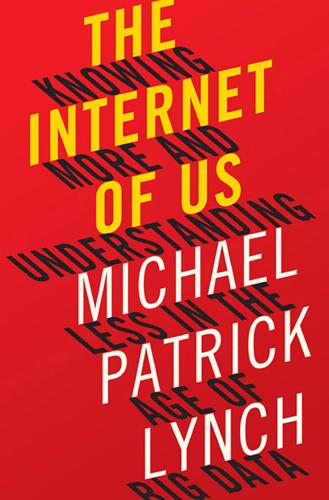
The Internet of Us: Knowing More and Understanding Less in the Age of Big Data
by
Michael P. Lynch
Published 21 Mar 2016
In this sort of case, the larger crowd is not the one you want to listen to. One might think the same goes for predicting something like the success of medical surgery. Unless the crowd has the same information and training as the relevant experts, it is not clear that they have wisdom to impart. As Leonhardt’s colleague Nate Silver noted during the final run-up to the 2012 election, such markets may contain more or less sophisticated participants, and the more sophisticated the average participant, the more other sophisticated participants tend to trust it. Moreover, when a given market is highly cited in the press, “that opens up the possibility that someone could place a wager on [a candidate] in order to influence the news media’s perceptions about which candidate has the momentum.”10 If so, the market may not be reflecting or mapping voter opinion but helping to determine it.
…
If so, then perhaps the best we can say is that what we can loosely call the group’s implicit commitment “supervenes” or is a product of the individuals’ commitments. 8. Surowiecki, The Wisdom of Crowds, xii. 9. David Leonhardt, “When the Crowd Isn’t Wise,” New York Times, July 7, 2012. 10. Nate Silver, “The Virtues and Vices of Election Prediction Markets,” New York Times, October 24, 2012. 11. I was helped to see these points in discussions with Sandy Goldberg and Nate Sheff. The example in the text is similar to that in Goldberg, “The Division of Epistemic Labor,” 117. 12. Weinberger, Too Big to Know, 21. 13.
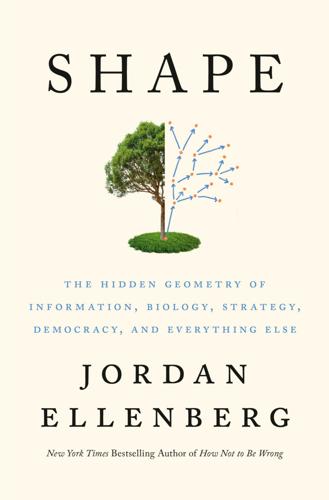
Shape: The Hidden Geometry of Information, Biology, Strategy, Democracy, and Everything Else
by
Jordan Ellenberg
Published 14 May 2021
See also a popular writeup of this paper by two more of its authors, David Rothschild and Sharad Goel, “When You Hear the Margin of Error Is Plus or Minus 3 Percent, Think 7 Instead,” New York Times, Oct. 5, 2016. “Just last week”: A. Prokop, “Nate Silver’s Model Gives Trump an Unusually High Chance of Winning. Could He Be Right?,” Vox, Nov. 3, 2016. https://www.vox.com/2016/11/3/13147678/nate-silver-fivethirtyeight-trump-forecast. “After 2016”: The New Republic, Dec. 14, 2016. “Mr. Pearson would”: Egon S. Pearson, “Karl Pearson: An Appreciation of Some Aspects of His Life and Work,” Biometrika 28, no. 3/4 (Dec. 1936): 206.
…
.* Which brings us to Donald Trump. As the 2016 U.S. presidential election neared, one thing everyone agreed on was that Hillary Clinton was running ahead. But just how much of a chance Donald Trump had was in great dispute. The newsmagazine Vox wrote on November 3: Just last week, Nate Silver’s polls-only forecast gave Hillary Clinton an overwhelming 85 percent chance of winning. But as of Thursday morning, her odds have fallen down to 66.9 percent—suggesting that while Donald Trump is still the underdog, there’s a one-in-three shot he’ll end up the next president. Liberals have tried to comfort themselves with the knowledge that FiveThirtyEight is an outlier among the six major forecasts, and that the other five give Trump between a 16 percent and a sub-1 percent chance of winning.
…
You might estimate this chance—or Sam Wang, the cricket-eater-to-be, might estimate this chance—as being 0.45 × 0.45 × 0.23 × 0.21 × 0.17 which is about 1 in 600. Trump’s chance of winning even three or four of these states, under the same kind of computation, is pretty small. Nate Silver saw things differently. His model built in a healthy amount of correlation between the different states, based on the undeniable fact that pollsters could unknowingly be making design choices that biased the sample toward one candidate or the other. Yes, our best estimate was that Trump was behind in Florida, and in North Carolina, and in each of the other swing states.

The Hacker and the State: Cyber Attacks and the New Normal of Geopolitics
by
Ben Buchanan
Published 25 Feb 2020
Also see Adam Gabbatt, “Trump Says Russia Helped Elect Him—Then Quickly Backtracks,” Guardian, May 30, 2019. 82. Nate Silver, “How Much Did Russian Interference Affect The 2016 Election?,” FiveThirtyEight, February 16, 2018; Lucam Ahmad Way and Adam Casey, “Russia Has Been Meddling in Foreign Elections for Decades. Has It Made a Difference?,” Washington Post, January 8, 2018; Jane Mayer, “How Russia Helped Swing the Election for Trump,” New Yorker, September 24, 2018. 83. For an analysis of the Comey letter, see Nate Silver, “The Comey Letter Probably Cost Clinton The Election,” FiveThirtyEight, May 3, 2017. Among other possibly serious missteps, Clinton never campaigned in Wisconsin during the general election, a state she narrowly lost.
…
Among other possibly serious missteps, Clinton never campaigned in Wisconsin during the general election, a state she narrowly lost. Nate Silver, “Donald Trump Had a Superior Electoral College Strategy,” FiveThirtyEight, February 6, 2017. For a discussion of turnout in various demographic groups, see Bernard L. Fraga, Sean McElwee, Jesse Rhodes, and Brian Schaffner, “Why Did Trump Win? More Whites—and Fewer Blacks—Actually Voted,” Washington Post Monkey Cage Blog, May 8, 2017. 84. For the definitive history of Soviet active measures, see Thomas Rid, Active Measures: The Secret History of Disinformation and Political Warfare (New York: Farrar, Strauss, and Giroux, 2020). 85.

Prediction Machines: The Simple Economics of Artificial Intelligence
by
Ajay Agrawal
,
Joshua Gans
and
Avi Goldfarb
Published 16 Apr 2018
Kelly Gonsalves, “Google Has More Than 1,000 Artificial Intelligence Projects in the Works,” The Week, October 18, 2016, http://theweek.com/speedreads/654463/google-more-than-1000-artificial-intelligence-projects-works. 5. A rich, entertaining, and ultimately useless debate rages about whether these sabermetric analysts are better or worse than the scouts. As Nate Silver highlights, both the Moneyball types and the scouts have important roles to play. Nate Silver, The Signal and the Noise (New York: Penguin Books, 2015), chapter 3. 6. You may counter and say that surely, in order to improve, the prediction machine needs that past repository of data? This is a subtle issue. Prediction works best when adding new data does not change algorithms too much—that stability is an outcome of good statistical practice.

Escape From Model Land: How Mathematical Models Can Lead Us Astray and What We Can Do About It
by
Erica Thompson
Published 6 Dec 2022
The US presidential elections have been the subject of quantitative forecasting by bodies such as Nate Silver’s FiveThirtyEight, which on 8 November 2016 predicted a 71% chance of Hillary Clinton winning that year’s presidential vote based on analysis of polling data, corrected for expected sampling biases. Of course, she did not win, and there followed a lot of discussion about why the predictions had been so wrong, what had happened to the polling, etc. FiveThirtyEight’s take on it, predictably, was that a 71% chance of one candidate winning still left a 29% chance of the other winning, with Nate Silver then writing articles like ‘Why FiveThirtyEight Gave Trump a Better Chance Than Almost Anyone Else’ (published 11 November 2016), arguing that, based on the forecast, the result should not have been as shocking as it was.

Doing Good Better: How Effective Altruism Can Help You Make a Difference
by
William MacAskill
Published 27 Jul 2015
We can’t just say that the chance of affecting the outcome by voting is so small as to be negligible. We need to work out how large the benefit would be if we did indeed affect the outcome. Luckily, some statisticians have done the hard work for us, including political pundit extraordinaire Nate Silver, who correctly predicted the winner of the 2012 election in all fifty states and the District of Columbia. Along with Columbia University professor of statistics Andrew Gelman and Berkeley professor of law Aaron Edlin, Silver calculated the odds of an individual vote swaying the outcome of the 2008 presidential election and found that, on average, a voter had approximately a one-in-sixty-million chance of affecting the outcome—small odds to be sure.
…
“Nobody in their right mind”: “Your FREAK-quently asked questions, answered,” Freakonomics (blog), January 20, 2011, http://freakonomics.com/2011/01/20/freakonomics-radio-your-freak-quently-asked-questions-answered/. the odds of an individual vote swaying the outcome of the 2008 presidential election: Andrew Gelman, Nate Silver, and Aaron Edlin, “What Is the Probability Your Vote Will Make a Difference?” Economic Inquiry 50, no. 2 (April 2012), 321–6. The authors reached this estimate by using election forecasts to calculate the probability that (1) a given state is necessary for an electoral college to win, and that (2) the election for that state is exactly tied—the two quantities that jointly determine whether a single vote is decisive in a US presidential election.
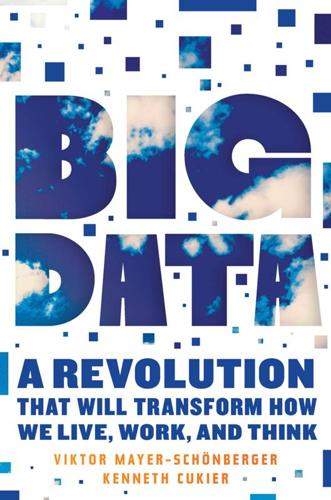
Big Data: A Revolution That Will Transform How We Live, Work, and Think
by
Viktor Mayer-Schonberger
and
Kenneth Cukier
Published 5 Mar 2013
Systematic biases in the way the data is collected can lead to the extrapolated results being very wrong. There are echoes of such problems in election polling using landline phones. The sample is biased against people who only use cell-phones (who are younger and more liberal), as the statistician Nate Silver has pointed out. This has resulted in incorrect election predictions. In the 2008 presidential election between Barack Obama and John McCain, the major polling organizations of Gallup, Pew, and ABC/Washington Post found differences of between one and three percentage points when they polled with and without adjusting for cellphone users—a hefty margin considering the tightness of the race.
…
A sample of 1,100 observations is sufficient—Earl Babbie, Practice of Social Research (12th ed. 2010), pp. 204–207. [>] The cellphone effect—“Estimating the Cellphone Effect,” September 20, 2008 (http://www.fivethirtyeight.com/2008/09/estimating-cellphone-effect-22-points.html); for more on polling biases and other statistical insights see Nate Silver, The Signal and the Noise: Why So Many Predictions Fail—But Some Don’t (Penguin, 2012). [>] Steve Jobs’s gene sequencing—Walter Isaacson, Steve Jobs (Simon and Schuster, 2011), pp. 550–551. [>] Google Flu Trends predicting to city level—Dugas et al., “Google Flu Trends.” Etzioni on temporal data—Interview by Cukier, October 2011. [>] John Kunze quotation—Jonathan Rosenthal, “Special Report: International Banking,” The Economist, May 19, 2012, pp. 7–8.
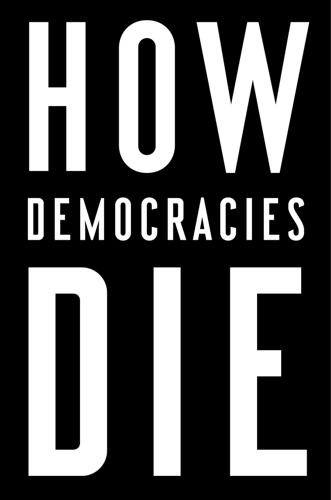
How Democracies Die
by
Steven Levitsky
and
Daniel Ziblatt
Published 16 Jan 2018
Even after Trump began to surge in the polls, few people took his candidacy seriously. In August 2015, two months after Trump declared his candidacy, Las Vegas bookmakers gave him one-hundred-to-one odds of winning the White House. And in November 2015, as Trump sat high atop the Republican polls, Nate Silver, founder of the FiveThirtyEight blog, whose uncannily accurate predictions in the 2008 and 2012 elections had earned him fame and prestige, wrote an article titled “Dear Media: Stop Freaking Out About Donald Trump’s Poll Numbers.” The article predicted that Trump’s weakness among party insiders would spell his demise.
…
skip the “invisible primary”: For a detailed explanation of why this was the case, see Cohen, Karol, Noel, and Zaller, The Party Decides. Las Vegas bookmakers: James Ceaser, Andrew Busch, and John Pitney Jr., Defying the Odds: The 2016 Elections and American Politics (Washington, DC: Rowman & Littlefield, 2017), p. 69. “considerably less than 20 percent”: Nate Silver, “Dear Media: Stop Freaking Out About Donald Trump’s Polls,” FiveThirtyEight, November 23, 2015, http://fivethirtyeight.com/features/dear-media-stop-freaking-out-about-donald-trumps-polls/. Citizens United ruling: Marty Cohen, David Karol, Hans Noel, and John Zaller, “Party Versus Faction in the Reformed Presidential Nominating System, PS (October 2016), pp. 704–5; Theda Skocpol and Alex Hertel-Fernandez, “The Koch Network and Republican Party Extremism,” Perspectives on Politics 14, no. 3 (2016), pp. 681–99.
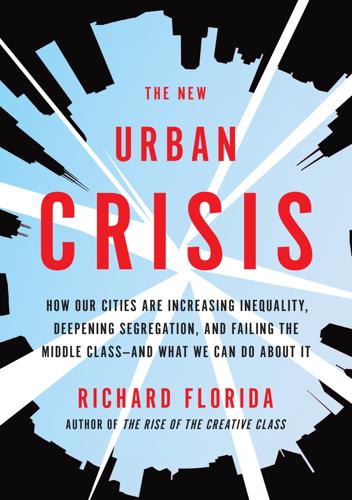
The New Urban Crisis: How Our Cities Are Increasing Inequality, Deepening Segregation, and Failing the Middle Class?and What We Can Do About It
by
Richard Florida
Published 9 May 2016
Ironically—and troublingly—cities and metro areas can be both more diverse and more segregated at the same time. My own analysis shows that segregation is positively associated with two common measures of diversity: the concentration of gay and lesbian people and the share of the population that is foreign-born.35 A 2015 analysis by Nate Silver comparing the overall ethnic and racial diversity of the nation’s one hundred largest cities to the racial and ethnic segregation of their neighborhoods found segregation to be higher in more racially and ethnically diverse cities.36 Ultimately, the one-two punch of race and economic segregation hits hardest at poor African American neighborhoods.
…
The black creative class is modestly associated with my measure of overall economic segregation (0.20), but this correlation is much more modest than that for the white creative class (0.66). 35. The Overall Segregation Index is positively associated with the concentration of gay and lesbian households (0.42) and the share of adults who are foreign-born (0.38). 36. Nate Silver, “The Most Diverse Cities Are Often the Most Segregated,” FiveThirtyEight, May 1, 2015, http://fivethirtyeight.com/features/the-most-diverse-cities-are-often-the-most-segregated. 37. Paul A. Jargowsky, “Architecture of Segregation: Civil Unrest, the Concentration of Poverty, and Public Policy,” Century Foundation, August 9, 2015, http://apps.tcf.org/architecture-of-segregation. 38.
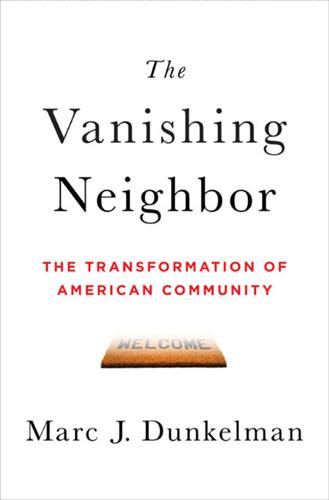
The Vanishing Neighbor: The Transformation of American Community
by
Marc J. Dunkelman
Published 3 Aug 2014
Moreover, all sorts of interesting conclusions have been gleaned since researchers began to apply data-centered tools to softer disciplines. Just a few years ago, for example, Freakonomics applied the tools of statistics to realms traditionally held outside the main of economic studies—and to great effect.14 More recently, new, sophisticated models and data sets have propelled authors like Nate Silver to international fame, predicting both sporting outcomes and, famously, the outcome of the 2012 presidential election.15 But that new emphasis has orphaned some of the questions earlier generations asked. There are, after all, aspects of our lives that elude rigorous data analysis. There’s no way to measure numerically how Americans balance the divergent impulses toward inner-directedness and other-directedness, or whether they’re more or less driven to conform to the expectations of each varied social environment.
…
Dan Clawson (Amherst: University of Massachusetts Press, 1998), 19–27. 9Riesman, 1961 introduction to The Lonely Crowd, xlii. 10Riesman, The Lonely Crowd, 24–25. 11Charles McGrath, “Big Thinkster,” New York Times Magazine, December 29, 2002. 12“Interview with Malcolm Gladwell,” Charlie Rose, December 3, 2013. 13McGrath, “Big Thinkster.” 14Steven D. Levitt and Stephen J. Dubner, Freakonomics: A Rogue Economist Explores the Hidden Side of Everything (New York: William Morrow, 2005). 15Chris Cillizza, “Best year in Washington: Nate Silver,” Washington Post, December 28, 2012. 16http://espn.go.com/nba/salaries/_/year/2011. 17Walter Isaacson, Steve Jobs (New York: Simon & Schuster, 2011). 18Daniel Kahneman, Thinking Fast and Slow (New York: Farrar, Straus and Giroux, 2011). Chapter 2: The Third Wave 1John B. Judis, “Newt’s not-so-weird gurus,” New Republic, October 9, 1995. 2http://www.alvintoffler.net/?
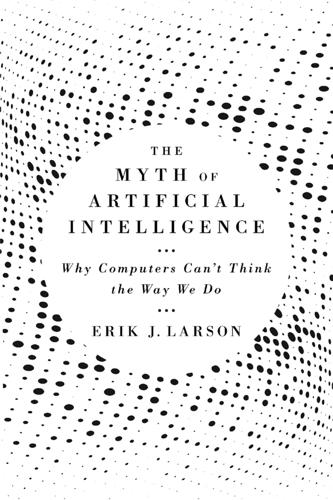
The Myth of Artificial Intelligence: Why Computers Can't Think the Way We Do
by
Erik J. Larson
Published 5 Apr 2021
Buzzwords have changed, but the major fad pushing Big Data AI as a panacea threatens progress in fundamental areas like neuroscience, in spite of bold claims made by enthusiasts like Markram and others. The takeaway here is that the myth really does have practical consequences for our human futures—in actual science. OVERFITTING Statistician Nate Silver has also pointed out the inherent danger of overfitting theories (models) to data, where “overfitting” here means spuriously matching a set of data points to a description that contains no genuine explanatory power, because the description does not generalize to new, unseen data points in the underlying distribution in question.
…
Lee Gomes, “Machine-Learning Maestro Michael Jordan on the Delusions of Big Data and Other Huge Engineering Efforts,” IEEE Spectrum, October 20, 2014, https://spectrum.ieee.org/robotics/artificial-intelligence/machinelearning-maestro-michael-jordan-on-the-delusions-of-big-data-and-other-huge-engineering-efforts. 12. Ibid. 13. Gary Marcus and Ernest Davis, “Eight (No Nine!) Problems with Big Data,” New York Times, April 6, 2014. 14. Nate Silver, The Signal and the Noise: Why So Many Predictions Fail—But Some Don’t (New York: Penguin Books, 2015). Chapter 17: Neocortical Theories of Human Intelligence 1. Jeff Hawkins, On Intelligence: How a New Understanding of the Brain Will Lead to the Creation of Truly Intelligent Machines (New York: St.
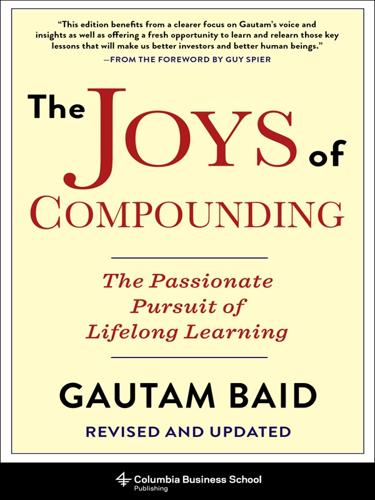
The Joys of Compounding: The Passionate Pursuit of Lifelong Learning, Revised and Updated
by
Gautam Baid
Published 1 Jun 2020
Judge them based on their execution track record and do not get influenced by the use of superlatives and adjectives by other people (which is usually more of a persuasion technique than anything else). 4. Distinguish between the signal and the noise. The signal is the truth. The noise is what distracts us from seeing it. In his book The Signal and the Noise, Nate Silver writes, “There isn’t any more truth in the world than there was before the Internet or the printing press. Most of the data is just noise, as most of the universe is filled with empty space.”23 If we want to increase the signal-to-noise ratio, we need to first cut out the cacophony of all the noise surrounding us.
…
Herbert Simon enlightened me on bounded rationality, that is, the cognitive limitations of our minds. Fred Schwed made me aware of the inherent conflicts of interest in the investment industry. Robert Cialdini made me aware of the various psychological tactics used by compliance practitioners. Nate Silver and Philip Tetlock educated me on the follies of forecasting and how we can improve our skills at making estimates through probabilistic thinking, Bayesian belief updating, and the use of relevant base rates. John Allen Paulos, Barbara Oakley, and Jana Vembunarayanan taught me how to engage in intelligent mathematical thinking.
…
Warren Buffett, Berkshire Hathaway 1979 Annual Letter to Shareholders, March 3, 1980, http://www.berkshirehathaway.com/letters/1979.html. 20. Warren Buffett, Berkshire Hathaway 1987 Annual Letter to Shareholders, February 29, 1988, http://www.berkshirehathaway.com/letters/1987.html. 21. Tetlock and Gardner, Superforecasting. 22. Harvey S. Firestone, Men and Rubber: The Story of Business (Whitefish, MT: Kessinger, 2003). 23. Nate Silver, The Signal and the Noise: Why So Many Predictions Fail—but Some Don’t (London: Penguin, 2015). 24. Goodreads.com, accessed December 10, 2019, https://www.goodreads.com/quotes/393102-when-information-is-cheap-attention-becomes-expensive. 25. Ian Cassel, “Paul Lountzis on Differential Insights,” MicroCapClub, October 10, 2016, https://microcapclub.com/2016/10/paul-lountzis-differential-insights/. 26.

The Theft of a Decade: How the Baby Boomers Stole the Millennials' Economic Future
by
Joseph C. Sternberg
Published 13 May 2019
Wright, One Nation Under Debt: Hamilton, Jefferson, and the History of What We Owe [New York: McGraw-Hill, 2008]). † Policy wonk Nate Silver draws an interesting connection between this phenomenon and changing public attitudes toward the government over the latter part of the twentieth century: “We may have gone from conceiving of government as an entity that builds roads, dams and airports, provides shared services like schooling, policing and national parks, and wages wars, into the world’s largest insurance broker. Most of us don’t much care for our insurance broker” (Nate Silver, “Health Care Drives Increase in Government Spending,” New York Times, January 17, 2013)
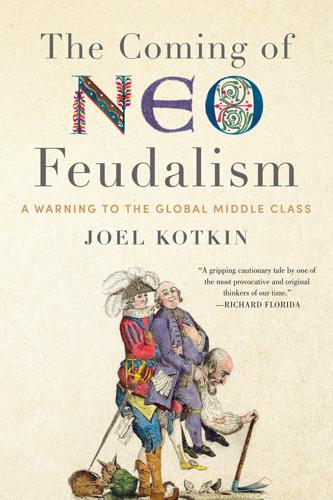
The Coming of Neo-Feudalism: A Warning to the Global Middle Class
by
Joel Kotkin
Published 11 May 2020
Olivier Waine, Metropolitics, February 19, 2014, https://www.metropolitiques.eu/The-world-of-the-blue-collar.html. 24 Jeremy Warner, “Small Business Owners Explain Why France Is a Nation in Decline,” Business Insider, October 19, 2014, https://www.businessinsider.com/small-business-owners-explain-why-france-is-a-nation-in-decline-2014-10. 25 Orlando Figes, A People’s Tragedy: The Russian Revolution, 1891–1924 (New York: Penguin, 1996), 737. 26 Ibid., 511, 551; Dmitri Volkogonov, Autopsy for Empire: The Seven Leaders Who Built the Soviet Regime (New York: Free Press, 1998), 63. 27 Eric D. Weitz, Weimar Germany: Promise and Tragedy (Princeton: Princeton University Press, 2007), 334. 28 Frederic Spotts, Hitler and the Power of Aesthetics (New York: Overlook Press, 2003), 30, 79–82, 98. 29 Klaus P. Fischer, Nazi Germany: A New History (New York: Continuum, 1996), 17. 30 Nate Silver, “There Really Was a Liberal Media Bubble,” FiveThirtyEight, March 10, 2017, https://fivethirtyeight.com/features/there-really-was-a-liberal-media-bubble/; “Media Bias: Pretty Much All of Journalism Now Leans Left, Study Shows,” Investor’s Business Daily, November 16, 2018, https://www.investors.com/politics/editorials/media-bias-left-study/. 31 Christopher M.
…
Malcolm Debevoise (New Haven: Yale University Press, 2019), 24. 25 “The far right’s new fascination with the Middle Ages,” Economist, January 2, 2017, https://www.economist.com/blogs/democracyinamerica/2017/01/medieval-memes. 26 Guilluy, Twilight of the Elites, 43. 27 Neil Munro, “Billionaire Steve Case says immigrants will offset middle class job losses,” Daily Caller, December 5, 2013, https://dailycaller.com/2013/12/05/billionaire-steve-case-says-immigrants-will-offset-middle-class-job-losses/. 28 Alex Pfeiffer, “Bill Kristol Says ‘Lazy’ White Working Class Should Be Replaced by ‘New Americans,’” Daily Caller, February 8, 2017, https://dailycaller.com/2017/02/08/bill-kristol-says-lazy-white-working-class-should-be-replaced-by-new-americans/. 29 Geoff Colvin, “Donald Trump’s Immigration Ban Ushers In a New Era of CEO Activism,” Fortune, February 7, 2017, http://fortune.com/2017/02/07/donald-trumps-immigration-ban-ushers-in-a-new-era-of-ceo-activism/. 30 Douglas Murray, The Strange Death of Europe: Immigration, Identity, Islam (London: Bloomsbury, 2017), 99, 226. 31 Giles Kepel, remarks at the Tocqueville Conversations, Château de Tocqueville, Normandy, France, June 7–8, 2018. 32 Goodhart, The Road to Somewhere, 3–4, 100; “The Brexit Index: a who’s who of Remain and Leave supporters,” Populus, https://www.populus.co.uk/insights/2016/05/the-brexit-index-a-whos-who-of-remain-and-leave-supporters/; House of Commons Library, “General Election 2019: Results and Analysis,” Number CBP 8749, 28 January 2020. 33 Peter Foster, “Denmark’s EU referendum is a blow to David Cameron,” Telegraph, December 4, 2015, https://www.telegraph.co.uk/news/worldnews/europe/denmark/12032958/Denmarks-EU-referendum-is-a-blow-to-David-Cameron.html; “Dutch referendum voters overwhelmingly reject closer EU links to Ukraine,” Guardian, April 7, 2016, https://www.theguardian.com/world/2016/apr/06/dutch-voters-reject-closer-eu-links-to-ukraine-in-referendum; Nick Gutteridge, “European Superstate to be unveiled: EU nations ‘to be morphed into one’ post-Brexit,” Express, June 29, 2016, https://www.express.co.uk/news/politics/683739/EU-referendum-German-French-European-superstate-Brexit; Project 28, “Handling the Immigration Crisis,” Századvég Foundation, http://project28.eu/. 34 Matthew Karnitschnig, “Cologne puts Germany’s ‘lying press’ on defensive,” Politico, January 25, 2016, https://www.politico.eu/article/cologne-puts-germany-lying-media-press-on-defensive-migration-refugees-attacks-sex-assault-nye/; Robert Spencer, “Google manipulates Search Results to Conceal Criticism of Islam and Jihad,” PJ Media, August 2, 2017, https://pjmedia.com/homeland-security/2017/08/02/google-manipulates-search-results-to-conceal-criticism-of-islam-and-jihad/; “Rome opens its gates to the modern barbarians,” Financial Times, May 15, 2018, https://www.ft.com/content/6348cc64-5764-11e8-b8b2-d6ceb45fa9d0. 35 Goodhart, The Road to Somewhere, 14. 36 Robert Samuelson, “The Middle Class Rocks—Again,” Real Clear Politics, September 18, 2017, https://www.realclearpolitics.com/articles/2017/09/18/the_middle_class_rocks-again_135014.html; Nate Silver, “Silver Bulletpoints: The Union Vote Could Swing the Election,” FiveThirtyEight, May 2, 2019, https://fivethirtyeight.com/features/silver-bulletpoints-the-union-vote-could-swing-the-election/. 37 Richard Florida, “Why Is Your State Red or Blue? Look to the Dominant Occupational Class,” City Lab, November 28, 2018, https://www.citylab.com/life/2018/11/state-voting-patterns-occupational-class-data-politics/575047/. 38 John Daniel Davidson, “Trump is no fascist.
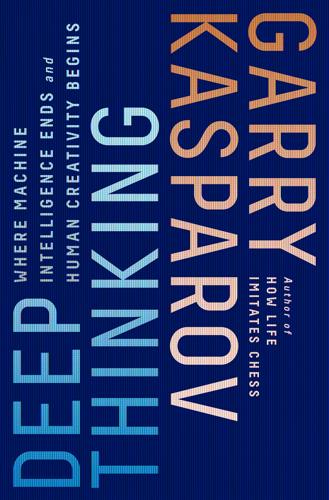
Deep Thinking: Where Machine Intelligence Ends and Human Creativity Begins
by
Garry Kasparov
Published 1 May 2017
The punch line to his theory was that Deep Blue’s mysterious move wasn’t profound at all; it was a blunder and the result of a yet another bug. Per Campbell and Hsu, the move was “random,” the result of a known bug they had failed to kill before the match began. This tale acquired new life when election analyst Nate Silver used it as the centerpiece for an entire chapter of his 2012 book, The Signal and the Noise. The narrative suggested by Frederic and spread by Campbell was irresistible: Kasparov lost to Deep Blue because of a bug! Writes Silver, “The bug was anything but unfortunate for Deep Blue: it was likely what allowed the computer to beat Kasparov.”
…
Two paragraphs after Illescas says IBM had hired Russian speakers to spy on me, he says the team entered this critical line into Deep Blue’s book that morning? An obscure variation that I had only discussed with my team in the privacy of our suite at the Plaza Hotel that week in New York? I’m no Nate Silver, but the odds of winning the lottery are quite attractive in comparison to those of the Deep Blue team entering a specific variation I had never played before in my life into the computer’s book on the very same day it appeared on the board in the final game. And not only preparing the machine for the 4..Nd7 Caro-Kann—even during my brief dalliance with the Caro-Kann as a fifteen-year-old I played the 4..Bf5 line exclusively—but also forcing it to play 8.Nxe6 and doing this despite generally giving Deep Blue “a lot of freedom to play,” in Illescas’s own words.
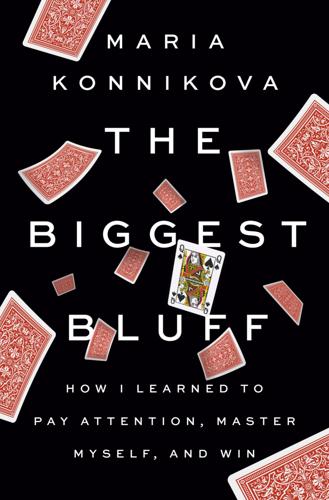
The Biggest Bluff: How I Learned to Pay Attention, Master Myself, and Win
by
Maria Konnikova
Published 22 Jun 2020
Of course, it’s a long way between betting on your own opinions and judging someone else. When we err, we are much more tolerant than when we think someone else has gone astray. Think of the 2016 presidential election. Every media source had polls showing Hillary Clinton winning—and every media source was wrong. No one was on the receiving end of the subsequent ire more than Nate Silver. He had done such an accurate job forecasting past elections that he was practically pilloried for being so “wrong” this time around. But what exactly did Silver say? In his final poll, on November 8, 2016, he gave Clinton a 71 percent chance of winning—and Trump a 29 percent chance. Twenty-nine percent.
…
Or would you then realize that there was a more than notable margin of error? It turns out that the odds of Trump winning are roughly the same as the odds of flopping a pair in hold’em—and you only have to play once or twice to realize that the odds of flopping a pair are a far cry from zero. Nate Silver is a poker player. In fact, once upon a time he made quite a tidy living playing online. And poker has taught him something fundamental about the nature of the world that most of us simply never bother to grasp. Poker is such a powerful window into probabilistic thinking not in spite of, but because of, the betting involved: the betting in poker isn’t incidental.
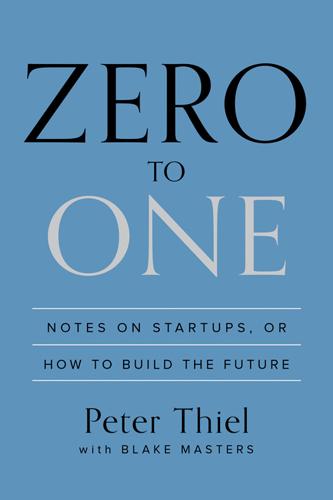
Zero to One: Notes on Startups, or How to Build the Future
by
Peter Thiel
and
Blake Masters
Published 15 Sep 2014
Indefinite Politics Politicians have always been officially accountable to the public at election time, but today they are attuned to what the public thinks at every moment. Modern polling enables politicians to tailor their image to match preexisting public opinion exactly, so for the most part, they do. Nate Silver’s election predictions are remarkably accurate, but even more remarkable is how big a story they become every four years. We are more fascinated today by statistical predictions of what the country will be thinking in a few weeks’ time than by visionary predictions of what the country will look like 10 or 20 years from now.

Warnings
by
Richard A. Clarke
Published 10 Apr 2017
However, such a response does little to help prepare for future disaster or to ensure that Cassandra’s warnings do not again go unheeded. As it seemed we weren’t the only ones who had noticed Cassandras in our midst, we then wondered if there existed any scholarly research on the topic of predictions. In fact, prediction is something that academics have spent a lot of time studying and considering. The statistician Nate Silver has taken a highly quantitative approach to prediction, one that works for a certain class of event. The jurist Richard Posner examined the phenomenon of catastrophes in the years after 9/11. Psychologists like Dan Ariely and Tsachi Ein-Dor have probed the way our brains work (and don’t) through empirical observation and the study of warnings.
…
Dan Gardner’s 2012 Future Babble draws on recent research in psychology, neuroscience, and behavioral economics to detail the biases and other cognitive processes that skew our judgment when we try to make predictions about the future. And building on a successful career in sports and political forecasting, Nate Silver discusses in his book, The Signal and the Noise, how thinking more probabilistically can help us distill more accurate predictions from a sea of raw data. Fundamentally, these books all identify the difficulties inherent in trying to see into the future. Predicting natural phenomena is stymied by the chaotic nature of the universe: natural processes are nonlinear systems driven by feedback loops that are often inherently unpredictable themselves.

Covid by Numbers
by
David Spiegelhalter
and
Anthony Masters
Published 28 Oct 2021
The median age of infection (as revealed by surveys) and testing positive was in the 30s, that of hospitalization was 72, but for critical care it was younger, at 61. For death it was 83, only slightly above the age for other causes. Is it enough just to look at the data? No. In the words of Nate Silver, author of The Signal and the Noise, ‘The numbers have no way of speaking for themselves. We speak for them. We imbue them with meaning.’3 Data can answer some questions but generate even more. Young people get infected, but why are so few hospitalized? Why do a comparatively young and narrow band of people end up in critical care?

Misbehaving: The Making of Behavioral Economics
by
Richard H. Thaler
Published 10 May 2015
To this day, the phrase “survey evidence” is rarely heard in economics circles without the necessary adjective “mere,” which rhymes with “sneer.” This disdain is simply unscientific. Polling data, which just comes from asking people whether they are planning to vote and for whom, when carefully used by skilled statisticians such as Nate Silver, yield remarkably accurate predictions of elections. The most amusing aspect of this anti-survey attitude is that many important macroeconomic variables are produced by surveys! For instance, in America the press often obsesses over the monthly announcement of the latest “jobs” data, with serious-looking economists asked to weigh in about how to interpret the figures.
…
So what effect has this research plus a free app had on the behavior of football coaches? Essentially none. Since Romer wrote his paper, the frequency of going for it on fourth down has marginally gone down, meaning that teams have gotten dumber! (Similarly, there has been no noticeable change in teams’ draft strategy since our paper came out.) Nate Silver, the ex–sports analytics junkie who became famous for his political forecasts and for the excellent book The Signal and the Noise, estimates that bad fourth-down decisions cost a football team an average of half a win per season. The Times analysts estimate it to be closer to two-thirds of a win per year.

The Patient Will See You Now: The Future of Medicine Is in Your Hands
by
Eric Topol
Published 6 Jan 2015
Although Eisenstein stopped short of claiming that the first industrial revolution was an outgrowth of the printing press, many others have claimed this. Marshall McLuhan, in The Gutenberg Galaxy, wrote: “The invention of typography confirmed and extended the new visual stress of applied knowledge, providing the first uniformly repeatable commodity, the first assembly-line, and the first mass-production.”11 More recently, Nate Silver, in The Signal and the Noise, asserted that the industrial revolution of 1775 was sparked by the printing press, whereby the economic growth rate that was stagnant at 0.1 percent per year then grew faster than the growth rate of the population.12 But I prefer to principally assess the Gutenberg transformative effects by the specific attributes that they induced or cultivated instead of as a precursor for subsequent momentous periods in history.
…
Table 3.1 summarizes the predominant attributes affected by Gutenberg’s press and compares them to the smartphone, or what some term as the “phablet” (a combination of smartphone and tablet). At first glance you will note a check mark in every box. But here I’ll explain why the parallels can be seen as striking. Without question, APP was associated with an explosion of knowledge and too much information. So too is our era. Back in the fifteenth century, as Nate Silver summed up, “the amount of information was increasing much more rapidly than our understanding of what to do with it, or our ability to differentiate the useful information from the mistruths.”13 Here in the twenty-first century, we call that “big data,” with more data generated in the past two years than in the history of humankind.
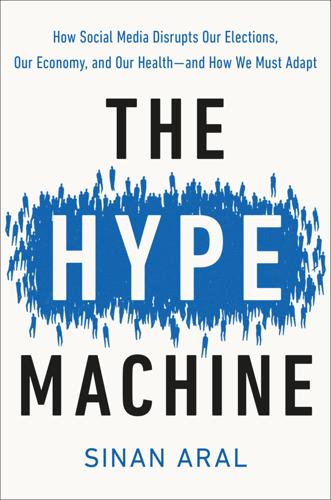
The Hype Machine: How Social Media Disrupts Our Elections, Our Economy, and Our Health--And How We Must Adapt
by
Sinan Aral
Published 14 Sep 2020
The twin reports highlight, but do not answer, perhaps the most important question facing democracy in the digital age: to what extent are democratic elections vulnerable to social media manipulation? Journalists and academics have weighed in on this question, often with confident yet contradictory conclusions. Nate Silver, founder and editor in chief of the site FiveThirtyEight, remarked that “if you wrote out a list of the most important factors in the 2016 election, I’m not sure that Russian social media memes would be among the top 100.” Some academics are similarly skeptical, arguing that “Russia-sponsored content on social media likely did not decide the election” because Russian-linked spending and exposure to fake news were relatively small-scale.
…
Howard et al., The IRA, Social Media and Political Polarization in the United States, 2012–2018, Investigation of Russian Interference prepared for the U.S. Senate Select Committee on Intelligence (Graphika, 2019), https://int.nyt.com/data/documenthelper/534-oxford-russia-internet-research-agency/c6588b4a7b940c551c38/optimized/full.pdf. “if you wrote out a list of the most important factors”: Nate Silver, tweet, December 17, 2018, https://twitter.com/natesilver538/status/1074833714931224582?lang=en. “Russia-sponsored content on social media likely”: John Sides, Michael Tesler, and Lynn Vavreck, Identity Crisis: The 2016 Presidential Campaign and the Battle for the Meaning of America (Princeton: Princeton University Press, 2018).
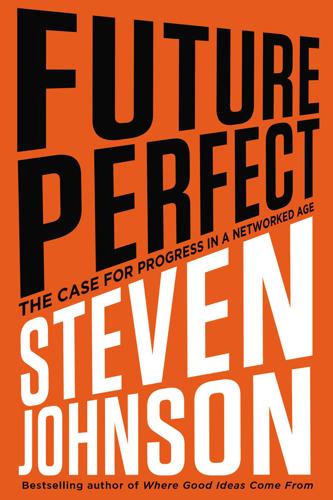
Future Perfect: The Case for Progress in a Networked Age
by
Steven Johnson
Published 14 Jul 2012
Daily Kos provided in-depth surveys and field reports on state races that the Times would never have had the ink to cover. Individual bloggers such as Andrew Sullivan responded to each twist in the news cycle; The Huffington Post culled the most provocative opinion pieces from the rest of the blogosphere. The statistician Nate Silver at the website Five Thirty Eight did meta-analysis of polling that exceeded anything Bill Schneider dreamed of doing on CNN in 1992. When the banking crisis erupted in September 2008, I followed economist bloggers such as Brad DeLong to get their expert take on the candidates’ responses to the crisis.
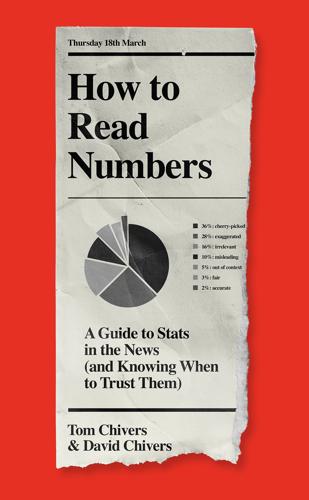
How to Read Numbers: A Guide to Statistics in the News (And Knowing When to Trust Them)
by
Tom Chivers
and
David Chivers
Published 18 Mar 2021
Philip Inman, ‘OBR caps UK growth forecast at 1.2% but says five-year outlook bright’, the Guardian, 2019 https://www.theguardian.com/business/2019/mar/13/obr-caps-uk-growth-forecast-at-12-but-says-five-year-outlook-bright 2. ‘How our forecasts measure up’, Met Office blog, 2016 https://blog.metoffice.gov.uk/2016/07/10/how-our-forecasts-measure-up/ 3. Nate Silver, The Signal and the Noise: The Art and Science of Prediction, Penguin 2012. Chapter 18: Assumptions in Models 1. Peter Hitchens, ‘There’s powerful evidence this Great Panic is foolish, yet our freedom is still broken and our economy crippled’, the Mail on Sunday, 2020. Archived at the Wayback Machine: https://www.dailymail.co.uk/debate/article-8163587/PETER-HITCHENS-Great-Panic-foolish-freedom-broken-economy-crippled.html We have used the archived version because the original Mail on Sunday article has been edited since publication, so that the quoted line ‘He has twice revised his terrifying prophecy, first to fewer than 20,000 and then on Friday to 5,700’, now reads ‘He or others from Imperial College have twice revised his terrifying prophecy, first to fewer than 20,000 and then on Friday to 5,700’ (our italics). 2.
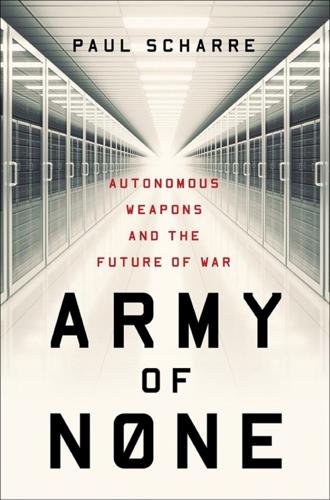
Army of None: Autonomous Weapons and the Future of War
by
Paul Scharre
Published 23 Apr 2018
Later that evening while pouring over a recreation of the final moves, Kasparov discovered that in 20 moves he would have checkmated Deep Blue. The implication was that Deep Blue made a nonsense move and resigned because it could see 20 moves ahead, a staggering advantage in chess. Nate Silver reports that this bug may have irreparably shaken Kasparov’s confidence. Nate Silver, The Signal and the Noise: Why So Many Predictions Fail (New York: Penguin, 2015), 276–289. 150 recent UNIDIR report on autonomous weapons and risk: UN Institute for Disarmament Research, “Safety, Unintentional Risk and Accidents in the Weaponization of Increasingly Autonomous Technologies,” 2016, http://www.unidir.org/files/publications/pdfs/safety-unintentional-risk-and-accidents-en-668.pdf.

Coders: The Making of a New Tribe and the Remaking of the World
by
Clive Thompson
Published 26 Mar 2019
the general population: Peter Ryan, “Left, Right and Center: Crypto Isn’t Just for Libertarians Anymore,” CoinDesk, July 27, 2018, https://www.coindesk.com/no-crypto-isnt-just-for-libertarians-anymore; Nate Silver, “There Are Few Libertarians. But Many Americans Have Libertarian Views,” FiveThirtyEight, April 9, 2015, https://fivethirtyeight.com/features/there-are-few-libertarians-but-many-americans-have-libertarian-views/; both accessed October 7, 2018">https://www.coindesk.com/no-crypto-isnt-just-for-libertarians-anymore; Nate Silver, “There Are Few Libertarians. But Many Americans Have Libertarian Views,” FiveThirtyEight, April 9, 2015, https://fivethirtyeight.com/features/there-are-few-libertarians-but-many-americans-have-libertarian-views/; both accessed October 7, 2018.

Spies, Lies, and Algorithms: The History and Future of American Intelligence
by
Amy B. Zegart
Published 6 Nov 2021
In 2016, pollsters with advanced data analytics didn’t do any better. Four models tracked by the New York Times gave Republican candidate Donald Trump a 15 percent, 8 percent, 2 percent, and less than 1 percent chance of winning against Democratic candidate Hillary Clinton. Even statistics guru Nate Silver put the odds of a Trump victory at just 29 percent.15 But we often forget that some things are much easier to predict than others. The foreseeability of the world out there varies in systematic ways for systematic reasons. The Predictability Spectrum: Four Key Factors As figure 5.1 shows, predictability lies along a spectrum.
…
William Stueck, Rethinking the Korean War: A New Diplomatic and Strategic History (Princeton, N.J.: Princeton University Press, 2002), 113. 14. Elizabeth Mix, “Dewey Defeats Truman Election Headline Gaffe,” History, November 1, 2018, (updated November 4, 2019), https://www.history.com/news/dewey-defeats-truman-election-headline-gaffe. 15. Nate Silver, “Why FiveThirtyEight Gave Trump a Better Chance Than Almost Anyone Else,” FiveThirtyEight, November 11, 2016, https://fivethirtyeight.com/features/why-fivethirtyeight-gave-trump-a-better-chance-than-almost-anyone-else/. 16. “Baseball Stats and History,” Baseball Reference, https://www.baseball-reference.com/. 17.
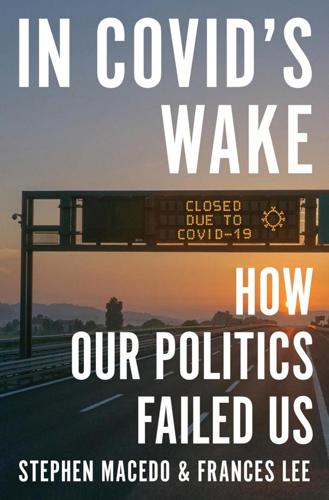
In Covid's Wake: How Our Politics Failed Us
by
Stephen Macedo
and
Frances Lee
Published 10 Mar 2025
Given the broad differences across Republican and Democratic states in both the implementation of NPIs before the vaccines w ere available and in vaccine uptake once vaccines became available, states’ Covid outcomes need to be examined across the full course of the pandemic. Figure 5.7 displays cumulative Covid mortality per capita for each month of the pandemic, with states grouped by their partisan lean (as determined by the Democratic margin in 2020). The data display, in the words of journalist Nate Silver who pointed to the patterns in a late 2023 Substack post, “two related facts that make for politically inconvenient bedfellows”: • Until vaccines became available, there was little difference in COVID death rates between blue states and red states. • After vaccines became available, there were clear differences, with red states having higher death rates.47 In other words, how one assesses states’ pandemic outcomes depends on when one examines them.
…
Luke Money, Rong-Gong Lin II, and Maura Dolan, “California Confirms Nation’s First Omicron Variant Coronavirus Case,” Los Angeles Times, December 1, 2021, https://www.latimes .com/california/story/2021-12-01/california-confirms-first-omicron-variant-covid-19-case. 47. Nate Silver, “The 2 Key Facts About US Covid Policy That Everyone Should Know: This Shouldn’t Feel Like a Contrarian Position,” Silver Bulletin, September 29, 2023, https://www .natesilver.net/p/the-2-key-facts-about-us-covid-policy. 48. Jacob Wallace, Paul Goldsmith-Pinkham, and Jason L.

Why Women Have Better Sex Under Socialism: And Other Arguments for Economic Independence
by
Kristen R. Ghodsee
Published 20 Nov 2018
In 2020, the United States will celebrate a century of women’s suffrage, but there are plenty of our fellow citizens who believe a century is long enough. In the weeks before the 2016 US presidential election, the Twitter hashtag #Repealthe19th started trending in response to two tweets by prognosticator Nate Silver. On his popular website FiveThirtyEight.com, Silver decided to predict the election outcome if only men or if only women voted. The electoral map for the men showed a handy victory for Donald Trump, whereas the women’s map revealed a landslide for Hillary Clinton. Some Trump supporters then suggested that in order to ensure a Trump victory, the United States should repeal the Nineteenth Amendment to the Constitution, which granted women’s suffrage.
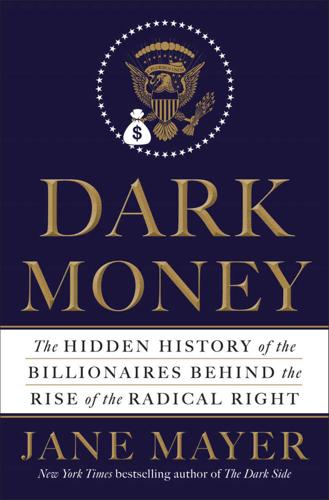
Dark Money: The Hidden History of the Billionaires Behind the Rise of the Radical Right
by
Jane Mayer
Published 19 Jan 2016
A series of loudspeakers formed a fence around an outdoor pavilion in which the donors met, emitting static toward the outside world, to prevent eavesdropping. Or so they thought until a reporter for Mother Jones, Brad Friedman, obtained an audio recording of the weekend’s highlights and published a transcript. As they gathered in the foothills of the Rockies, the donors had ample reason for optimism. The New York Times’s resident number cruncher, Nate Silver, who handicapped political odds with the unsentimental eye of a racetrack bookie, was openly asking, “Is Obama toast?” After analyzing Obama’s sagging approval rating and the economy’s lagging indicators, he concluded that Obama had gone from “a modest favorite to win re-election to, probably, a slight underdog.”
…
Cantor later told: Ryan Lizza, “The House of Pain,” New Yorker, March 4, 2013. “I think he came in truly trying”: Neera Tanden, interview with author. CHAPTER TWELVE: MOTHER OF ALL WARS Or so they thought: Brad Friedman, “Inside the Koch Brothers’ 2011 Summer Seminar,” The Brad Blog, June 26, 2011. The New York Times’s resident: Nate Silver, “Is Obama Toast? Handicapping the 2012 Election,” New York Times Magazine, Nov. 3, 2011. “Wouldn’t it be easier”: Halperin and Heilemann, Double Down, 345. Four years later: For more on Christie’s record, see Cezary Podkul and Allan Sloan, “Christie Closed Budget Gaps with One-Shot Maneuvers,” Washington Post, April 18, 2015, A1.
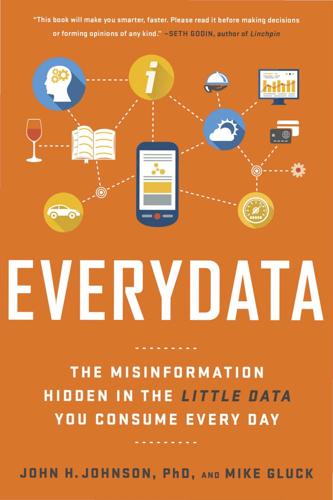
Everydata: The Misinformation Hidden in the Little Data You Consume Every Day
by
John H. Johnson
Published 27 Apr 2016
That said, the USGS does describe the places “most likely to produce earthquakes in the long term.” They call this forecasting, when they estimate the likelihood of a seismic event occurring over a period of time. This brings us to the distinction—or lack thereof—between a prediction and a forecast. As Nate Silver notes in The Signal and the Noise, the terms are used differently by some (most notably seismologists, who study earthquakes) but interchangeably by others. Some would argue that predictions are binary—something will or won’t happen—while forecasts are more probabilistic—there’s an X percent chance that something will happen.
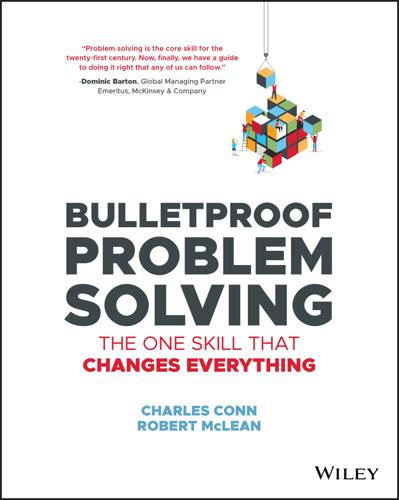
Bulletproof Problem Solving
by
Charles Conn
and
Robert McLean
Published 6 Mar 2019
Todd, and the ABC Research Group, Simple Heuristics That Make Us Smart (Oxford University Press, 2000). 3 Report prepared for the United Kingdom's Department of International Development by The Nature Conservancy, WWF, and the University of Manchester, “Improving Hydropower Outcomes through System Scale Planning, An Example from Myanmar,” 2016. 4 Warren Buffett, “My Philanthropic Pledge,” Fortune, June 16, 2010. 5 Our friend Barry Nalebuff of Yale points out that the actual rule is 69.3, but is usually rounded up to 72 because it is easier to do the division in your head. 6 CB Insights, May 25, 2015, www.cbinsights.com. 7 Nate Silver, The Signal and the Noise (Penguin, 2012). 8 Dan Lovallo, Carmina Clarke, and Colin Camerer, “Robust Analogizing and the Outside View: Two Empirical Tests of Case Based Decision Making,” Strategic Management Journal 33, no. 5 (2012): 496–512. 9 “‘Chainsaw Al’ Axed,” CNN Money, June 15, 1998. 10 This problem was suggested by Barry Nalebuff of Yale University. 11 Nicklas Garemo, Stefan Matzinger, and Robert Palter, “Megaprojects: The Good, the Bad, and the Better,” McKinsey Quarterly, July 2015 (quoting Bent Flyvberg, Oxford Saïd Business School). 12 Daniel Kahneman, Dan Lovallo, and Olivier Sibony, “Before You Make that Big Decision,” Harvard Business Review, June 2011. 13 Gerd Gigerenzer, Peter M.

Whiplash: How to Survive Our Faster Future
by
Joi Ito
and
Jeff Howe
Published 6 Dec 2016
Suspects Hackers in China Breached About 4 Million People’s Records, Officials Say,” Wall Street Journal, June 5, 2015, http://www.wsj.com/articles/u-s-suspects-hackers-in-china-behind-government-data-breach-sources-say-1433451888. 29 James O’Shea, The Deal from Hell: How Moguls and Wall Street Plundered Great American Newspapers (New York: PublicAffairs, 2012). 30 Matt Levine, “Guy Trading at Home Caused the Flash Crash,” Bloomberg View, April 21, 2015, http://www.bloombergview.com/articles/2015-04-21/guy-trading-at-home-caused-the-flash-crash. 31 Melanie Mitchell, Complexity: A Guided Tour (New York: Oxford University Press, 2009), 10. 32 Ibid., 176 33 Ibid., 13 34 Page is referring to the famous scene in the mockumentary This Is Spinal Tap in which the mentally addled lead guitarist, Nigel Tufnel, tries to explain the significance of an amplifier with the capacity to exceed the conventional 10 on the volume knob. “Well, it’s one louder, isn’t it?” 35 Quoted in Joichi Ito and Jeff Howe, “The Future: An Instruction Manual,” LinkedIn Pulse, October 2, 2012, https://www.linkedin.com/pulse/20121002120301-1391-the-future-an-instruction-manual. 36 Nate Silver, The Signal and the Noise: Why So Many Predictions Fail (New York: Penguin, 2012); Louis Menand, “Everybody’s an Expert,” New Yorker, December 5, 2005, http://www.newyorker.com/magazine/2005/12/05/everybodys-an-expert; Stephen J. Dubner, “The Folly of Prediction,” Freakonomics podcast, September 14, 2011, http://freakonomics.com/2011/09/14/new-freakonomics-radio-podcast-the-folly-of-prediction/. 37 National Council for Science and the Environment, The Climate Solutions Consensus: What We Know and What to Do About It, edited by David Blockstein and Leo Wiegman (Washington, D.C.: Island Press, 2012), 3. 38 Oxford Advanced Learner’s Dictionary, http://www.oxforddictionaries.com/us/definition/learner/medium. 39 The Media Lab’s website includes a comprehensive overview of the Lab’s funding model, current research, and history. http://media.mit.edu/about/about-the-lab. 40 Olivia Vanni.
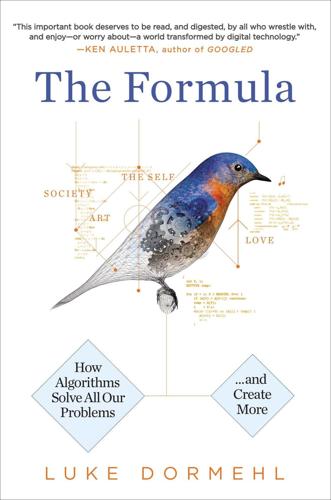
The Formula: How Algorithms Solve All Our Problems-And Create More
by
Luke Dormehl
Published 4 Nov 2014
While I was first coming up with formulas at college, trying to mathematically determine whether we should go to the library to get some work done, deep down in the recesses of our dorky ids I think that what we were saying is that life is uncertain and we were trying to make it more certain. I’m not as disturbed by numbers providing answers as I am by the potential that there might not be answers.” What is it about the modern world that makes us demand easy answers? Is it that we are naturally pattern-seeking creatures, as the statistician Nate Silver argues in The Signal and the Noise? Or is there something about the effects of the march of technology that demands the kind of answers only an algorithm can provide? “[The algorithm does] seem to be a key metaphor for what matters now in terms of organizing the world,” acknowledges McKenzie Wark, a media theorist who has written about digital technologies for the last 20 years.
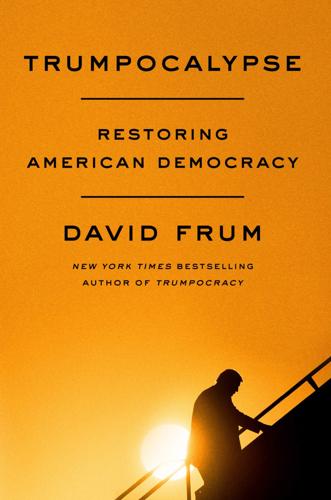
Trumpocalypse: Restoring American Democracy
by
David Frum
Published 25 May 2020
“Generic Congressional Ballot,” Rasmussen Reports, November 5, 2018, http://www.rasmussenreports.com/public_content/politics/mood_of_america/generic_congressional_ballot_nov05. President Trump has sometimes tweeted 50 percent numbers generated by the Rasmussen poll, but Rasmussen habitually screens for “likely” voters in a way that favors Republicans. This method produces headlines very appealing to Fox News between elections, but poor accuracy at elections. Nate Silver has rated Rasmussen consistently the least accurate of the major pollsters. Rasmussen enjoyed a fleeting triumph in 2016. That year its persistent habit of overestimating white turnout for once paid off. Driven by a surge in voting by white noncollege graduates, white turnout actually increased between 2012 and 2016, something that has not happened in memory: normally the US electorate becomes about slightly less white each election than the election before.

Cogs and Monsters: What Economics Is, and What It Should Be
by
Diane Coyle
Published 11 Oct 2021
We are typically trying to test hypotheses about a small number of variables in a complex world of millions of variables, with a huge amount of two-way feedback or simultaneity, and using a relatively small amount of data, sometimes of dubious quality. It is difficult in the extreme to establish causality rather than correlation. Neither RCTs nor more realistic assumptions in economic models make a difference to the sheer difficulty of the empirical challenge. Nate Silver writes in his bestseller The Signal and the Noise: The government produces data on literally 45,000 economic indicators each year. Private data providers track as many as four million statistics. The temptation that some economists succumb to is to put all this data into a blender and claim that the resulting gruel is haute cuisine.

Pivot: The Only Move That Matters Is Your Next One
by
Jenny Blake
Published 14 Jul 2016
Aggregating and analyzing data, conducting original research: With increasingly more data available on everything from how many steps we take, to our heart rate, to mapping our genome, people will need help making sense of this data, “separating the signal from the noise,” as political pollster Nate Silver does. Some say that “data is the new oil” in our digital economy, and must be refined in order to add value. REVEL IN THE WORK OTHERS REJECT After four years at her PR firm, Amy Schoenberger, who you met in the introduction, started feeling uninspired. She knew that it was time to make a change; however, she loved her company, the culture, and the people, and she did not want to leave.

Simple Rules: How to Thrive in a Complex World
by
Donald Sull
and
Kathleen M. Eisenhardt
Published 20 Apr 2015
Salmon et al., “Health on Impulse: When Low Self-Control Promotes Healthy Food Choices,” Health Psychology 33, no. 2 (2013): 103–9, http://www.medscape.com/medline/abstract/2347758. [>] In contrast, people: Brian Wansink, David R. Rust, and Collin R. Payne, “Mindless Eating and Healthy Heuristics for the Irrational,” American Economic Review: Papers and Proceedings 99, no. 2 (2009): 165–69. [>] Meteorologists make: Nate Silver, The Signal and the Noise (New York: Penguin, 2012), 126–27. [>] Japanese honeybees: Atsushi Ugajin et al., “Detection of Neural Activity in the Brains of Japanese Honeybee Workers During the Formation of a ‘Hot Defensive Bee Ball,’” PLoS One 7, no. 3 (2012), available at the website of the National Center for Biotechnology Information, http://www.ncbi.nlm.nih.gov/pmc/articles/PMC3303784/. [>] As an example of: Our account of the bees’ choice of new nest is based on the research of Thomas Seeley, especially Thomas D.
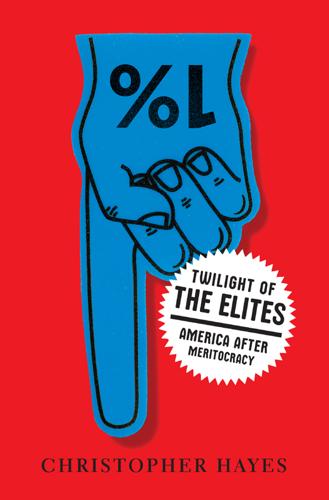
Twilight of the Elites: America After Meritocracy
by
Chris Hayes
Published 11 Jun 2012
Acknowledgments One of the more insidious aspects of meritocratic indoctrination is that it teaches you to believe that you wholly own your accomplishments. As I’ve tried to make clear in the book, it’s a tempting notion but a dangerous one. As is the case with any project of this size, this book is the product of the labor of far, far more people than the one person whose name appears on the cover. A Nate Silver post at his old site FiveThirtyEight, that showed General Social Survey data about America’s declining trust in their institutions over time, first crystallized the idea for the book. And it was during a long, loquacious walk I took with Dan Benaim through Washington, DC, in 2009 that I was first able to articulate just what it was I wanted to write a book about.

The Internet Is Not the Answer
by
Andrew Keen
Published 5 Jan 2015
“So much for the borderless, gender-blind, class-blind and bank account–blind MOOCs,” notes the technology writer Jessica McKenzie. “If anything, this shows that MOOCs are widening the educational divide, not leveling the playing field.”19 This unequal economy is particularly pronounced in online journalism, where, amid the massive layoffs at regional newspapers, highly paid American reporters like Nate Silver, Ezra Klein, Matt Taibbi, and Glenn Greenwald represent what Emily Bell, the director of the Tow Center for Digital Journalism at Columbia University, calls “a one percent economy.”20 Ironically, for all the talk of how the Internet was supposed to diversify the news industry, the end result of the combination of a one percent economy and massive layoffs is less diversity in the newsroom, with minority employment for American journalists down almost 6% between 2006 and 2012.21 And as Bell also notes, the most recent wave of venture-capital-funded “personal brand” journalist startups are almost all supporting white male superstars like Greenwald, Taibbi, Silver, and Klein.22 But the most damaging discrimination is against paid work.

The New Class Conflict
by
Joel Kotkin
Published 31 Aug 2014
Hall, “With Help from Silicon Valley, America to Dominate the 21st Century,” Tech.pinions, August 12, 2013, http://techpinions.com/help-silicon-valley-america-dominate-21st-century/21550. 101. John B. Judis, “The GOP Plan to Crush Silicon Valley What Will Become of Steve Jobs’s Angel?” New Republic, August 20, 2013, http://www.newrepublic.com/article/114329/republican-budget-cut-would-crush-silicon-valley; Nate Silver, “In Silicon Valley, Technology Talent Gap Threatens G.O.P. Campaigns,” FiveThirtyEight (blog), New York Times, November 28, 2012, http://fivethirtyeight.blogs.nytimes.com/2012/11/28/in-silicon-valley-technology-talent-gap-threatens-g-o-p-campaigns. 102. Matthew Continetti, “The California Captivity of the Democratic Party,” Washington Free Beacon, May 31, 2013, http://freebeacon.com/columns/the-california-captivity-of-the-democratic-party. 103.

Artificial Unintelligence: How Computers Misunderstand the World
by
Meredith Broussard
Published 19 Apr 2018
It used to be that you would get stories by chatting to people in bars, and it still might be that you’ll do it that way some times. But now it’s also going to be about poring over data and equipping yourself with the tools to analyse it and picking out what’s interesting. And keeping it in perspective, helping people out by really seeing where it all fits together, and what’s going on in the country.”19 By the time Nate Silver launched FiveThirtyEight.com and published his book The Signal and the Noise in 2012, the term data journalism was in widespread use among investigative journalists.20 As computers have evolved, human nature has not. People need to be kept honest. I hope that this book will help you think like a data journalist so that you can challenge false claims about technology and uncover injustice and inequality embedded in today’s computational systems.
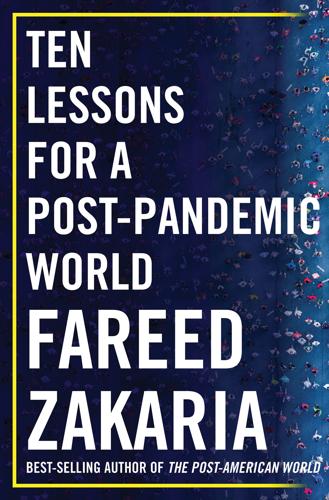
Ten Lessons for a Post-Pandemic World
by
Fareed Zakaria
Published 5 Oct 2020
xItem=54929&ctNode=2198&=9. 90 around a third of the public: 33.4% of the US population have college degrees as of 2016: US Census Bureau, “Educational Attainment in the United States: 2016,” https://www.census.gov/newsroom/press-releases/2017/cb17-51.html; “31% of 25–64 Year Olds Achieved Tertiary Level Study,” European Commission, Eurostat, https://ec.europa.eu/eurostat/web/products-eurostat-news/-/EDN-20181008-1. 90 barely 13%: 13.1% have a master’s, professional degree, or doctorate: US Census Bureau, “Educational Attainment in the United States: 2018,” https://www.census.gov/library/stories/2019/02/number-of-people-with-masters-and-phd-degrees-double-since-2000.html. 90 10% of China’s population: As of 2010 Chinese Census, Education at a Glance: OECD Indicators 2016, “People’s Republic of China,” https://gpseducation.oecd.org/Content/EAGCountryNotes/EAG2016_CN_CHN.pdf. 90 99%: 99.2% of the Chinese Community Party’s 18th Central Committee attended some college as of 2016: Cheng Li, Table 4.1, “Percentage of College-Educated Members on the 8th–18th Central Committees,” Chinese Politics in the Xi Jinping Era: Reassessing Collective Leadership (Washington, DC: Brookings Institution Press, 2016). 91 3.7 times as high: US Census Bureau, “Educational Attainment in the United States: 2018.” 91 Clinton won most of the first group: Nate Silver, “Education, Not Income, Predicted Who Would Vote for Trump,” FiveThirtyEight, November 22, 2016, https://fivethirtyeight.com/features/education-not-income-predicted-who-would-vote-for-trump/. 91 two-thirds of rural Americans approve: Nathaniel Rakich and Dhrumil Mehta, “Trump Is Only Popular in Rural Areas,” FiveThirtyEight, December 7, 2018, https://fivethirtyeight.com/features/trump-is-really-popular-in-rural-areas-other-places-not-so-much/. 91 “no such thing as a Republican city”: Will Wilkinson, “The Density Divide: Urbanization, Polarization, and Populist Backlash,” Niskanen Center, June 2019, https://www.niskanencenter.org/wp-content/uploads/2019/09/Wilkinson-Density-Divide-Final.pdf. 91 those without university degrees: Anushka Asthana, “People Who Felt Marginalised Drove Brexit Vote, Study Finds,” Guardian, August 31, 2016. 91 “yellow vest” protests were powered: Marie Dupin, “Jeunes, Précaires, Ruraux: Qui Sont Les Gilets Jaunes?

A Hacker's Mind: How the Powerful Bend Society's Rules, and How to Bend Them Back
by
Bruce Schneier
Published 7 Feb 2023
FEAR AND RISK 195very basic brain functions: Bruce Schneier (3 Apr 2000), “The difference between feeling and reality in security,” Wired, https://www.wired.com/2008/04/securitymatters-0403. 196Terrorism directly hacks: Bruce Schneier (17 May 2007), “Virginia Tech lesson: Rare risks breed irrational responses,” Wired, https://www.wired.com/2007/05/securitymatters-0517. 196“When people are insecure”: Nate Silver (1 Feb 2010), “Better to be strong and wrong—especially when you’re actually right,” FiveThirtyEight, https://fivethirtyeight.com/features/better-to-be-strong-and-wrong. 197“immigrants are going to take your jobs”: Fox News (26 Jan 2017), “The truth about jobs in America,” The O’Reilly Factor (transcript), https://www.foxnews.com/transcript/the-truth-about-jobs-in-america. 197“[this or that city] is crime-ridden”: Audrey Conklin (21 Feb 2022), “Homicides, rapes in Atlanta soar despite other decreasing violent crime,” Fox News, https://www.foxnews.com/us/homicides-rapes-atlanta-soar-2022. 197“ISIS is a threat to Americans”: Ronn Blitzer (26 Oct 2021), “Top Pentagon official confirms ISIS-K could have capability to attack US in ‘6 to 12 months,’ ” Fox News, https://www.foxnews.com/politics/pentagon-official-isis-k-us-attack-6-to-12-months. 197“Democrats are going to take your guns”: Tucker Carlson (9 Apr 2021), “Biden wants to take your guns, but leave criminals with theirs,” Fox News, https://www.foxnews.com/opinion/tucker-carlson-biden-gun-control-disarm-trump-voters. 48.
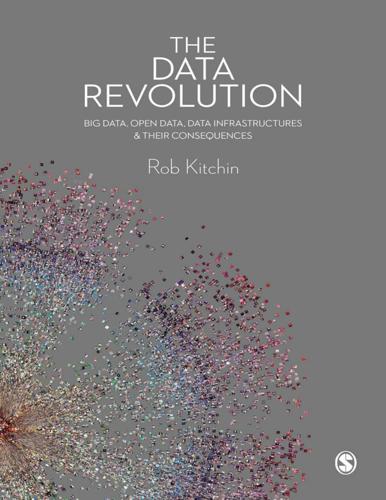
The Data Revolution: Big Data, Open Data, Data Infrastructures and Their Consequences
by
Rob Kitchin
Published 25 Aug 2014
, International Data Privacy Law, online first, http://idpl.oxfordjournals.org/content/early/2013/01/24/idpl.ips036.short (last accessed 15 July 2013). Ruppert, E. (2012) ‘The governmental topologies of database devices’, Theory, Culture Society, 29: 116–36. Ruppert, E. (2013) ‘Rethinking empirical social sciences’, Dialogues in Human Geography, 3(3): 268–73. Salmon, F. (2014) ‘Why the Nate Silvers of the world don’t know everything’, Wired, 7 January, http://www.wired.com/business/2014/01/quants-dont-know-everything/ (last accessed 8 January 2014). Salus, P. (1995) Casting the Net: From Arpanet to Internet and Beyond. Addison Wesley, Reading, MA. Sawyer, S. (2008) ‘Data wealth, data poverty, science and cyberinfrastructure’, Prometheus: Critical Studies in Innovation, 26(4): 355–71.

The Second Machine Age: Work, Progress, and Prosperity in a Time of Brilliant Technologies
by
Erik Brynjolfsson
and
Andrew McAfee
Published 20 Jan 2014
Meta Brown et al., “Grading Student Loans,” Liberty Street Economics blog, Federal Reserve Bank of New York, March 5, 2012, http://libertystreeteconomics.newyorkfed.org/2012/03/grading-student-loans.html?utm_source=feedburner&utm_medium=feed&utm_campaign=Feed:+LibertyStreetEconomics+(Liberty+Street+Economics). 21. Tim Hornyak, “Towel-folding Robot Won’t Do the Dishes,” CNET, March 31, 2010, http://news.cnet.com/8301-17938_105-10471898-1.html. 22. Nate Silver, The Signal and the Noise: Why So Many Predictions Fail—But Some Don’t, 1st ed. (New York: Penguin, 2012). Chapter 13 POLICY RECOMMENDATIONS 1. “Employment Level,” Economic Research—Federal Reserve Bank of St. Louis (U.S. Department of Labor, Bureau of Labor Statistics, August 2, 2013), http://research.stlouisfed.org/fred2/series/LNU02000000. 2.
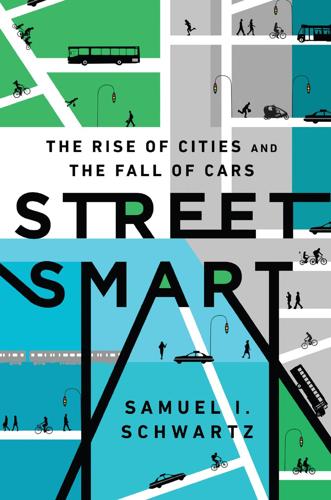
Street Smart: The Rise of Cities and the Fall of Cars
by
Samuel I. Schwartz
Published 17 Aug 2015
Once it exceeds that number, though, the voting patterns do a somersault. Anywhere under eight hundred people a square mile, there’s a two-thirds chance that a randomly selected voter went Republican; above it, that hypothetical voter pulled a Democratic lever two-thirds of the time. As the political prediction machine Nate Silver of 538.com tweeted in 2012, “If a place has sidewalks, it votes Democratic.” It’s not totally obvious whether people vote a certain way because of where they live, or whether they move to places where everyone votes the way they do. What is obvious though is that all the elements of a Street Smart transportation system depend on density.
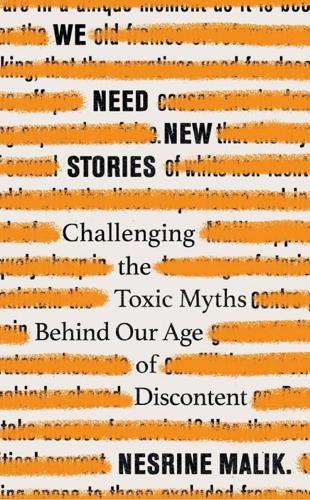
We Need New Stories: Challenging the Toxic Myths Behind Our Age of Discontent
by
Nesrine Malik
Published 4 Sep 2019
In June 2017, Stephens publicly forswore Twitter, saying that the medium debased politics and that he would ‘intercede only to say nice things about the writing I admire, the people I like and the music I love’. In response to criticism of an article of his that misread the success of Democrats in the midterms (and which had to be quietly amended, twice, after more results came in, invalidating his thesis), Stephens tweeted at statistician Nate Silver of 538, ‘too bad you’re a Twitter troll’. Unprovoked, he tweeted at James Zogby, founder and president of the Arab American Institute, who took issue with a chef calling hummus Israeli food, saying it was part of a history of ‘cultural appropriation’ and a systematic effort to erase Palestinian history and culture.

What Algorithms Want: Imagination in the Age of Computing
by
Ed Finn
Published 10 Mar 2017
Something of this knowing spectacle remained in Kasparov’s matches with Deep Blue, including his persistent efforts to deploy openings and play styles that would throw off IBM’s algorithms.53 The human engineer was never entirely hidden behind the mechanism, as IBM employees tweaked the system between every game. Perhaps the best example of this relationship was a highly scrutinized move near the end of game one, the truth of which was only revealed in 2012 when IBM researcher Murray Campbell was interviewed by the popular statistician Nate Silver. The move in question had sent Kasparov “into a tizzy” as it seemed to reflect the ambiguity and refinement of a human-level intelligence, and many have suggested it threw off the grandmaster’s concentration for the second game, which he proceeded to lose.54 In fact, as Campbell revealed, the move had been a bug, one the engineers corrected after the first match.55 Kasparov himself had made magic out of the algorithm, inventing a sophisticated cultural explanation for what was in the end a random computational artifact.
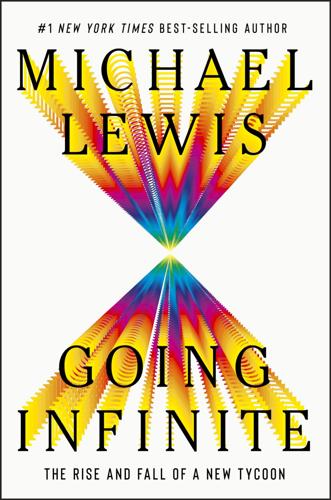
Going Infinite: The Rise and Fall of a New Tycoon
by
Michael Lewis
Published 2 Oct 2023
On the day in question, Sam hadn’t been looking for trouble. It was Asher Mellman who approached him. Which surprised him, because Sam could not stand Asher. Asher had come to Jane Street from Harvard, and Sam had decided, fairly quickly, that he was “fake and stuck-up and unimpressive.” (“He half had some maybe gig with Nate Silver and he made sure everyone knew.”) Sam realized that his feelings were a reflection more of his own tastes than of some universal loathsomeness of Asher’s. “It’s not that he’s an unlikable guy in general,” said Sam. “Much of the world likes him. But if you don’t like Asher, you really don’t like Asher.”
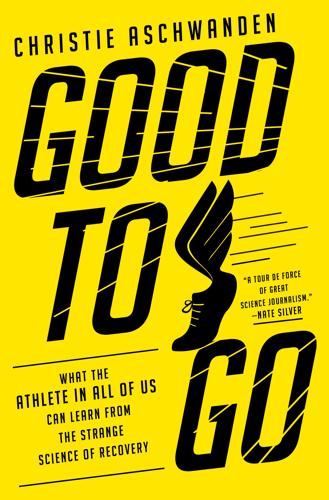
Good to Go: What the Athlete in All of Us Can Learn From the Strange Science of Recovery
by
Christie Aschwanden
Published 5 Feb 2019
Anna Barry-Jester fed me almost daily affirmations and was always willing to listen to my ramblings. A woman of a million talents, she also took my author photo. Chad Matlin has been a steadfast supporter of this book from the start. His contention that a book is simply an “idea vehicle” proved surprisingly useful in the project’s early stages. Nate Silver offered helpful advice on book writing, and Blythe Terrell cut me a little slack when I needed it in the final push to finish the manuscript. Working with Maggie Koerth-Baker and my other FiveThirtyEight colleagues has pushed me to become better in every way. Laura Helmuth convinced me I was on track when I wasn’t sure where I was going with this, and Farai Chideya offered helpful advice on how to balance book writing with everything else.

The Rationalist's Guide to the Galaxy: Superintelligent AI and the Geeks Who Are Trying to Save Humanity's Future
by
Tom Chivers
Published 12 Jun 2019
If you predict that there’s an 8 per cent chance of war, that doesn’t mean that you’re saying there won’t be a war; you’re saying that it’s unlikely, but that there’s still about a one in 12 chance. So if there is a war, you could reasonably claim, ‘Well I didn’t say there wouldn’t be,’ and mark yourself as correct. The way around this is to make lots of predictions and see how many come in. This method became particularly famous around the 2012 US presidential election, when Nate Silver, editor-in-chief of the website FiveThirtyEight.com, correctly predicted which way all 50 states would end up voting. He did it using exactly these methods: having a prior and then updating it with evidence, in the form of new polls. (The new polls were added to the database using an algorithm, thus taking human bias out of the equation, to a degree.)
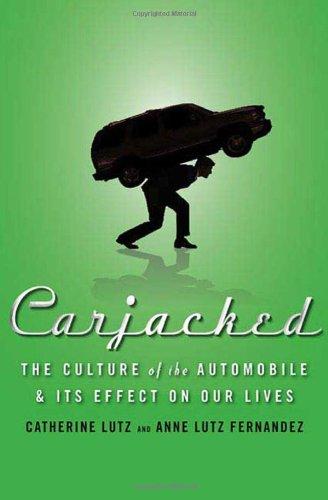
Carjacked: The Culture of the Automobile and Its Effect on Our Lives
by
Catherine Lutz
and
Anne Lutz Fernandez
Published 5 Jan 2010
John Pucher and Lewis Dijkstra, “Promoting Safe Walking and Cycling to Improve Public Health: Lessons from the Netherlands and Germany,” American Journal of Public Health, 2004, 93 (9): 1509–16. Evans, Traffic Safety. CHAPTER 10 1. “Edmunds.com Forecasts December Auto Sales: SUV and Truck Sales to Outpace Cars for First Time,” December 19, 2008, www.edmunds.com NOTES 2. 3. 4. 5. 6. 7. 8. 9. 10. 11. 12. 13. 14. 15. 16. 17. 18. 19. 20. 21. 22. 23. 24. 25. 26. 245 Nate Silver, “The End of Car Culture,” Esquire, May 6, 2009. “Recovery Accountability and Transparency Board. $8.4 Billion for Public Transit,” March 5, 2009, www.recovery.gov. Dylan Rivera, “U.S. Transportation Secretary Calls Portland’s Streetcar, Light Rail a ‘Model’ for Nation,” The Oregonian, April 14, 2009.
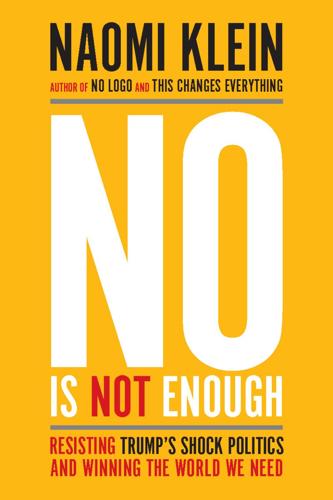
No Is Not Enough: Resisting Trump’s Shock Politics and Winning the World We Need
by
Naomi Klein
Published 12 Jun 2017
The Problem with “Jobs Voters” Past 40 years has seen number of people behind bars in US increase by 500 percent Carl Vogel, Prison Brake, University of Chicago School of Social Service Administration, accessed April 11, 2017, https://ssa.uchicago.edu/end-mass-incarceration. Trump voters: earn $50,000–$200,000 Nate Silver, “The Mythology of Trump’s ‘Working Class’ Support,” FiveThirtyEight, May 3, 2016, https://fivethirtyeight.com/features/the-mythology-of-trumps-working-class-support/. CNN analysis of exit polls “Exit polls,” CNN.com, November 23, 2016, http://www.cnn.com/election/results/exit-polls. Insecure on Every Front Anne Case and Angus Deaton: “deaths of despair” Anne Case and Angus Deaton, “Mortality and Morbidity in the 21st Century,” Brookings Papers on Economic Activity, 2017, https://www.brookings.edu/wp-content/uploads/2017/03/6_casedeaton.pdf.
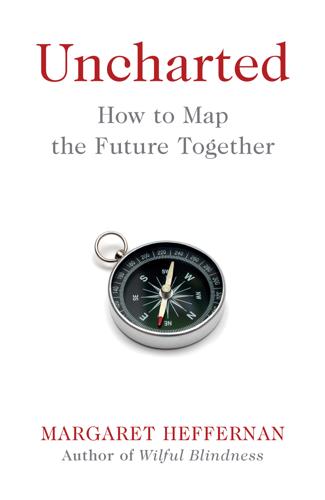
Uncharted: How to Map the Future
by
Margaret Heffernan
Published 20 Feb 2020
L., 2010 11 Author interview with Robert Skidelsky, 2 August 2018 12 Engelberg, Joseph, Sasseville, Caroline and Williams, Jared, ‘Market Madness? The Case of Mad Money’, Management Science, Vol. 58, Iss. 2, 2012 13 This is one reason why Warren Buffett has advised his wife to invest in tracker funds after this death. The pollster Nate Silver makes the challenging observation that the rare group that does outperform the market is US senators, raising all kinds of questions about inside information. See Silver, Nate, The Signal and the Noise: The Art and Science of Prediction, Penguin Books, London, 2013 14 See The Economist, 17 March 2018, p.39 15 I’m indebted to David Kedmey for pointing this out 16 ‘The Risk of Automation for Jobs in OECD Countries’, www.oecd-ilibrary.org/social-issues-migration-health/the-risk-of-automation-for-jobs-in-oecd-countries_5jlz9h56dvq7-en, accessed 14 October 2018 and 27 October 2019 17 ‘5 Things to Know about the Future of Jobs’, www.weforum.org/agenda/2018/09/future-of-jobs-2018-things-to-know/ 18 Google’s Chris Urmson suggested that the autonomous vehicle ‘has the potential to reduce current Federal spending pressures for roadways, parking and public transit’.

Artificial Whiteness
by
Yarden Katz
See the controversy surrounding Cambridge Analytica as reported, for instance, in “Cambridge Analytica Files,” Guardian, https://www.theguardian.com/news/series/cambridge-analytica-files. 9. Nick Bilton, “Google Buys A.I. Company for Search, Not Robots,” New York Times, January 28, 2014. 10. David Ignatius, “A Tech Bridge from the Pentagon to Silicon Valley,” Washington Post, January 25, 2019. 11. See, for example, Nate Silver, The Signal and the Noise: Why So Many Predictions Fail—but Some Don’t (New York: Penguin, 2012), 264. 12. The Global Artificial Intelligence Conference of 2018 invited participants to “hear from AI pioneers representing: Google, Capital One, Johnson & Johnson, Bloomberg, Facebook, Amazon, McKinsey, SAP, Microsoft, Biogen, Royal Caribbean Cruise Line, Uber, IBM, The Boston Consulting Group, Trulia Teradata, Columbia Sportswear Company etc.”
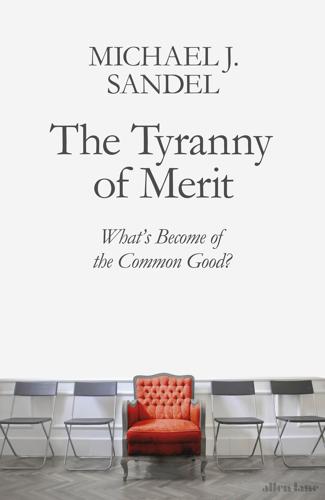
The Tyranny of Merit: What’s Become of the Common Good?
by
Michael J. Sandel
Published 9 Sep 2020
On Trump share of non-college white voters, see 2016 exit polls, CNN, cnn.com/election/2016/results/exit-polls ; Clinton share of advanced degree holders is from Thomas Piketty, “Brahmin Left vs. Merchant Right: Rising Inequality & the Changing Structure of Political Conflict,” wid.world Working Paper Series, March 2018, piketty.pse.ens.fr/files/Piketty2018.pdf , Figure 3.3b; on education versus income, see Nate Silver, “Education, Not Income, Predicted Who Would Vote for Trump,” November 22, 2016, FiveThirtyEight.com , fivethirtyeight.com/features/education-not-income-predicted-who-would-vote-for-trump . 60. Silver, “Education, Not Income, Predicted Who Would Vote for Trump.” Trump quoted in Susan Page, “Trump Does the Impossible—Again,” USA Today , February 25, 2016, usatoday.com/story/news/politics/elections/2016/02/24/analysis-donald-trump-does-impossible-again/80843932 . 61.
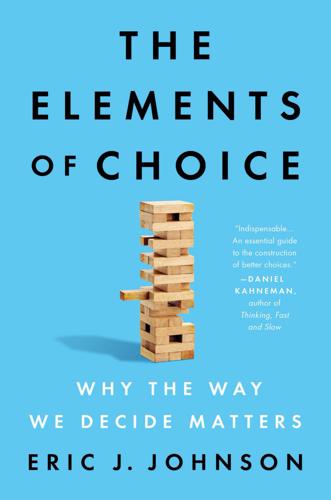
The Elements of Choice: Why the Way We Decide Matters
by
Eric J. Johnson
Published 12 Oct 2021
You can show a picture of the distribution of outcomes: Distribution of possible outcomes of 2016 presidential election from FiveThirtyEight.com17 Or you can show a count of what would happen if the election was held 100 or 1000 times: Dot plot of the distribution above18 All three methods present the same outcomes and are based on the forecasts from FiveThirtyEight.com, the well-known political prediction site run by Nate Silver. The two charts shown are in the style of that site; the next chart is in the style of a similar forecast done by The Economist. Similar data from The Economist forecast19 A fair amount of research in psychology shows that people use these three ways of presenting outcomes differently.

Enlightenment Now: The Case for Reason, Science, Humanism, and Progress
by
Steven Pinker
Published 13 Feb 2018
In the American election, voters in the two lowest income brackets voted for Clinton 52–42, as did those who identified “the economy” as the most important issue. A majority of voters in the four highest income brackets voted for Trump, and Trump voters singled out “immigration” and “terrorism,” not “the economy,” as the most important issues.34 The twisted metal has turned up more promising clues. An article by the statistician Nate Silver began, “Sometimes statistical analysis is tricky, and sometimes a finding just jumps off the page.” That finding jumped right off the page and into the article’s headline: “Education, Not Income, Predicted Who Would Vote for Trump.”35 Why should education have mattered so much? Two uninteresting explanations are that the highly educated happen to affiliate with a liberal political tribe, and that education may be a better long-term predictor of economic security than current income.
…
“How many additional countries will report cases of the Ebola virus in the next eight months?”) and having them write down numerical probabilities. Tetlock also avoided the common fallacy of praising or ridiculing a single probabilistic prediction after the fact, as when the poll aggregator Nate Silver of FiveThirtyEight came under fire for giving Donald Trump just a 29 percent chance of winning the 2016 election.45 Since we cannot replay the election thousands of times and count up the number of times that Trump won, the question of whether the prediction was confirmed or disconfirmed is meaningless.
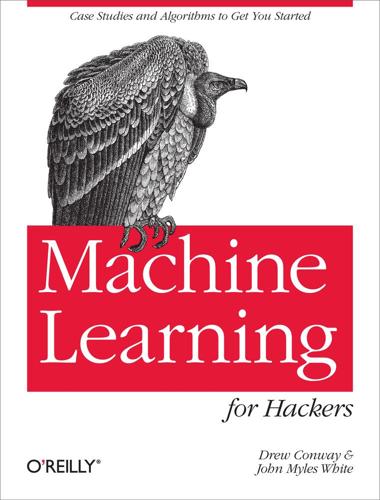
Machine Learning for Hackers
by
Drew Conway
and
John Myles White
Published 10 Feb 2012
Given what we have already learned about Drew’s bifurcated brain, this seems like a good match. Keeping this in mind, the rest of the recommendations fit one or both of Drew’s general interests. There is Danger Room (dangerroom); Wired’s National Security blog; Big Data (bigdata); and 538 (fivethirtyeight), the New York Times’ election forecasting blog by Nate Silver. And, of course, shitmydadsays. Although these recommendations are good—and since the writing of the first draft of this book, Drew has enjoyed following the names this engine presented—perhaps there is a better way to recommend people. Because we already know that a given seed user’s network has a lot of emergent structure, it might be useful to use this structure to recommend users that fit into those groups.
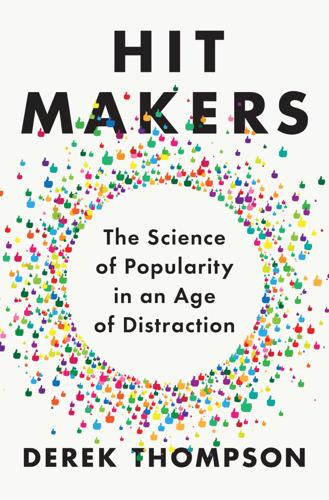
Hit Makers: The Science of Popularity in an Age of Distraction
by
Derek Thompson
Published 7 Feb 2017
Thanks to those whose work inspired this book, directly and implicitly: Raymond Loewy, Stanley Lieberson, Michael Kaminiski, Chris Taylor, Bill Bryson, Malcolm Gladwell, Jonah Berger, Steven Johnson, Tom Vanderbilt, Robert Gordon, David Suisman, Paul Barber, Elizabeth Margulis, John Seabrook, Charles Duhigg, Daniel Kahneman, Steven Pinker, Oliver Sacks, Michael Wolff, Nate Silver, Dan Ariely, Jonathan Franzen, Conor Sen, Felix Salmon, Matthew Yglesias, Ezra Klein, Chris Martin, Marc Andreessen, and Umberto Eco. Thanks to those whose conversations inspired this book, directly and implicitly: Drew Durbin, Lincoln Quirk, Michael Diamond, Jordan Weissmann, Robbie dePicciotto, Laura Martin, Maria Konnikova, Mark Harris, Spencer Kornhaber, Rececca Rosen, Alexis Madrigal, Bob Cohn, John Gould, Don Peck, James Bennet, Kevin Roose, Gabriel Rossman, Jesse Prinz, Duncan Watts, Anne Messitte, Andrew Golis, Aditya Sood, Nicholas Jackson, Seth Godin, the Diamonds, the Durbins, and Kira Thompson.
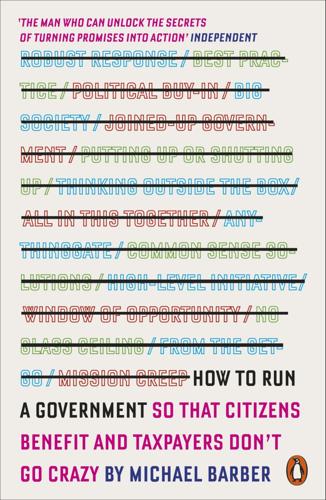
How to Run a Government: So That Citizens Benefit and Taxpayers Don't Go Crazy
by
Michael Barber
Published 12 Mar 2015
And, by the way, if I go down, you’re coming with me.’ In other words, reputations are at risk. But David’s point was right; if you want thousands of public servants to take responsibility for their part in achieving a goal, you need to make it clear that you take your responsibility seriously too. Nate Silver, in his magisterial survey of ‘the art and science of prediction’, The Signal and the Noise, urges us to think probabilistically when we forecast: rather than ‘it’s going to rain tomorrow’, ‘there is a 90 per cent chance of rain tomorrow’. This is, of course, the right way to think analytically when a target is being discussed.
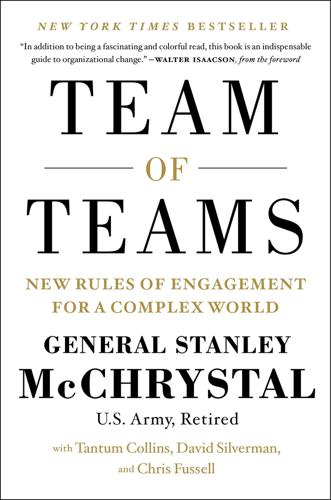
Team of Teams: New Rules of Engagement for a Complex World
by
General Stanley McChrystal
,
Tantum Collins
,
David Silverman
and
Chris Fussell
Published 11 May 2015
Quoted in Ben Ramalingam, Harry Jones, Toussaint Reba, and John Young, Exploring the Science of Complexity: Ideas and Implications for Development and Humanitarian Efforts, vol. 285 (London: Overseas Development Institute, 2008), 10. “The evidence on the folly” . . . Jonathan Davis, “Folly of Forecasting and Useless Data,” Financial Times, January 17, 2010, http://www.ft.com/intl/cms/s/0/b8c4adfe-0202-11df-8b56-00144feabdc0.html#axzz36R3YiZLR. one-in-five-hundred chance . . . Nate Silver, “The Weatherman Is Not a Moron,” New York Times, September 7, 2012, http://www.nytimes.com/2012/09/09/magazine/the-weatherman-is-not-a-moron.html?pagewanted=all. increasingly shorter lifespan . . . http://www.forbes.com/sites/stevedenning/2011/11/19/peggy-noonan-on-steve-jobs-and-why-big-companies-die/.

How I Built This: The Unexpected Paths to Success From the World's Most Inspiring Entrepreneurs
by
Guy Raz
Published 14 Sep 2020
But it’s doable, particularly when you are able to build buzz among many possible customers while at the same time engineering word of mouth among your ideal customers. 13 Get Attention, Part 2: Engineering Word of Mouth In 2012, amidst an explosion of social networking platforms, smartphones, and big data, the statistician Nate Silver published a book titled The Signal and the Noise, about the difficulty of developing accurate predictions. Up until that point, “signal-to-noise ratio” was a term used primarily by scientists and engineers to describe the power of a desired bit of information in relationship to its surroundings.
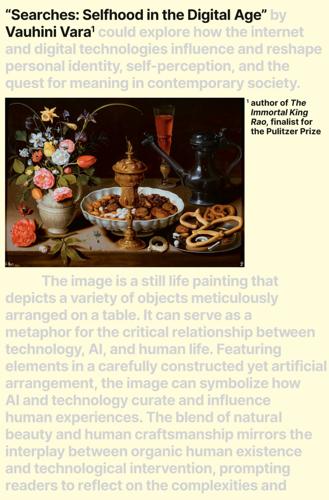
Searches: Selfhood in the Digital Age
by
Vauhini Vara
Published 8 Apr 2025
MLB Baseball, MLB players, Maggie Haberman, Margaret Sullivan, Mark Hamill, Mark Zuckerberg, Marvel Universe, Mathematics, Megan McArdle, Megan Rapinoe, Meta, Mexican cuisine, Michael Kors, Michael Kors Handbags, Wallets & Cases, Microsoft, Mike Isaac, Mitch McConnell, Mortal Kombat, Movies, Movies & TV, Mr. Beast, Mumbai, Music, Music events, Music festivals and concerts, My Brother, My Brother, and Me, Mystery & crime books. NBA Basketball, NBA Basketball, NBA players, NCAA Women’s Basketball, NFL players, NPR, Nachos, Naomi Klein, Natalie Portman, Nate Silver, National parks, Netflix, New Mexico, New York City, New York City art scene, New York State, New York University, News, News outlets, Nitasha Tiku, Non-fiction, Nursing & nurses. Ongoing news stories, OpenAI, Orange County, CA. PEN15, Panaji, Pankaj Tripathi, Parenting, Patriot Act With Hasan Minhaj (Netflix), Patton Oswalt, Paul F.

The Undoing Project: A Friendship That Changed Our Minds
by
Michael Lewis
Published 6 Dec 2016
Using the same methods, they won it again in 2007 and 2013. But in 2016, after three disappointing seasons, they announced that they were moving away from the data-based approach and back to one where they relied upon the judgment of baseball experts. (“We have perhaps overly relied on numbers . . . ,” said owner John Henry.) The writer Nate Silver for several years enjoyed breathtaking success predicting U.S. presidential election outcomes for the New York Times, using an approach to statistics he learned writing about baseball. For the first time in memory, a newspaper seemed to have an edge in calling elections. But then Silver left the Times, and failed to predict the rise of Donald Trump—and his data-driven approach to predicting elections was called into question . . . by the New York Times!

Designing Social Interfaces
by
Christian Crumlish
and
Erin Malone
Published 30 Sep 2009
Remember, everyone is overwhelmed with information and reminders to revisit or share information. If users can send or share content on impulse with immediate gratification, it is much more likely they will take the action and learn to expect to be able to do so (Figure 8-5). Figure 8-5. A reader of Nate Silver’s Fivethirtyeight.com blog asks him to add a sharing widget to his blog template. As a designer of social experiences, you have several potential avenues for employing a Share This widget: • You can design and make your own widget, and use it throughout your service and/ or encourage others to adopt it, thus driving at least some traffic back to your service. • You can publish icons, methods, and APIs for adding your service to existing or incumbent widgets (see Chapter 17). • You can embrace someone else’s widget if you simply want to incorporate its functionality and aren’t using sharing to drive direct participation in your own network or application.
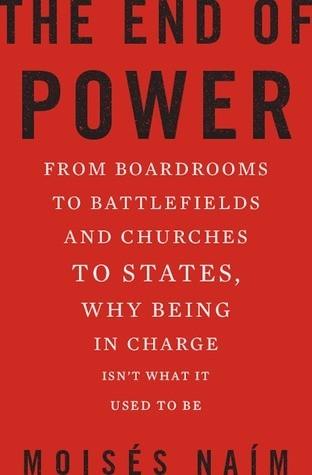
The End of Power: From Boardrooms to Battlefields and Churches to States, Why Being in Charge Isn’t What It Used to Be
by
Moises Naim
Published 5 Mar 2013
Meanwhile, the ease of publishing on the Internet has turned blogs on everything from electoral politics to fiscal policy, rock music, and business travel into credible and revenue-earning specialty sources that often outperform beat reporters and magazine analysts. Consider the case of statistics geek Nate Silver, who applied the skills he honed crunching baseball numbers to the 2008 and 2012 US presidential campaigns on his site fivethirtyeight.com. Using his own model to aggregate polling data, Silver was able to predict the outcome of the Super Tuesday primaries between Barack Obama and Hillary Clinton; he went on to predict Obama’s defeat of John McCain as early as March 2008, and his detailed predictions on Election Night got forty-nine out of fifty states right, and in the 2012 elections also predicted accurately the results.
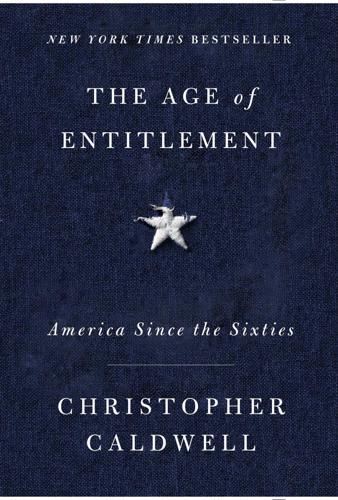
The Age of Entitlement: America Since the Sixties
by
Christopher Caldwell
Published 21 Jan 2020
.: Urban-Brookings Tax Policy Center, 2018), 322–23. Online at taxpolicycenter.org/briefing-book. In addition to their liquid assets: Kaplan, Then Comes Marriage, 95. was bankrolled by: From the “HRC Story” page of the Human Rights Campaign, https://www.hrc.org/hrc-story/corporate-partners. Accessed January 4, 2019. Google’s employees gave: Nate Silver, “How Rare Are Anti-Gay-Marriage Donations in Silicon Valley?,” FiveThirtyEight, April 4, 2014. Online at fivethirtyeight.com. Reuters discovered in 2014: Darel E. Paul, “Culture War as Class War,” First Things 285 (August–September 2018): 42. it permitted Windsor to tap: Kaplan, Then Comes Marriage, 56.

Doing Data Science: Straight Talk From the Frontline
by
Cathy O'Neil
and
Rachel Schutt
Published 8 Oct 2013
We see this in recommendation systems, ranking algorithms, friend suggestions, etc., and we will see it increasingly across sectors including education, finance, retail, and health. Things can go wrong with such feedback loops: keep the financial meltdown in mind as a cautionary example. Much is made about predicting the future (see Nate Silver), predicting the present (see Hal Varian), and exploring causal relationships from observed data (the past; see Sinan Aral). The next logical concept then is: models and algorithms are not only capable of predicting the future, but also of causing the future. That’s what we can look forward to, in the best of cases, and what we should fear in the worst.

Can It Happen Here?: Authoritarianism in America
by
Cass R. Sunstein
Published 6 Mar 2018
Shanto Iyengar, Gaurav Sood, and Yohtach Lelkes, “Affect, Not Ideology: A Social Identity Perspective on Polarization,” Public Opinion Quarterly 76 (2012): 405–31. 37. Václav Havel, “The Power of the Powerless,” in The Power of the Powerless: Citizens against the State in Central-Eastern Europe, ed. John Keane, trans. Paul Wilson from 1979 orig. (Armonk, NY: M.E. Sharpe, 1985), 27–28. For an interpretation, see Kuran, Private Truths, chaps. 7 and 13. 38. Nate Silver, “Education, Not Income, Predicted Who Would Vote for Trump,” FiveThirtyEight, November 22, 2016; Alec Tyson and Shiva Maniam, “Behind Trump’s Victory: Divisions by Race, Gender, Education,” Pew Research Center Fact Tank, November 9, 2016. 39. According to exit polls, 81 percent of white evangelicals voted for Trump (Gregory A.
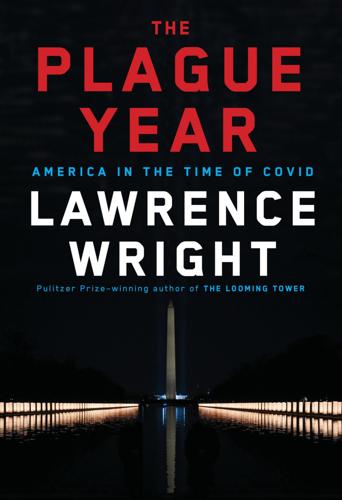
The Plague Year: America in the Time of Covid
by
Lawrence Wright
Published 7 Jun 2021
seventeen-year-old Trump supporter: John Fritz, Kevin Johnson, and David Jackson, “Trump defends Kyle Rittenhouse on eve of visit to Kenosha,” USA Today, Aug. 31, 2020. widest margin: Alec Tyson and Shiva Maniam, “Behind Trump’s victory: Divisions by race, gender, education,” Pew Research Center, Nov. 9, 2016. “unbreakable lead”: Nate Silver, “The Comey Letter Probably Cost Clinton The Election,” FiveThirtyEight, May 3, 2016. opioid epidemic: Dean Reynolds, “Overdoses now leading cause of death of Americans under 50,” CBS News, June 6, 2017; Adam Dean and Simeon Kimmel, “Free trade and opioid overdose death in the United States,” SSM Population Health, Aug. 8, 2019.
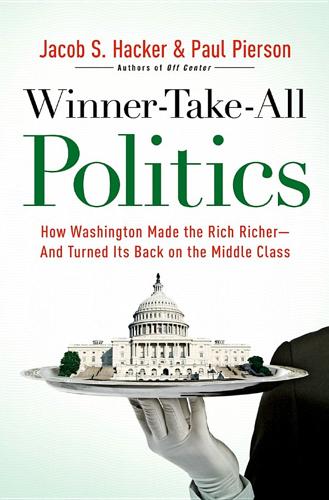
Winner-Take-All Politics: How Washington Made the Rich Richer-And Turned Its Back on the Middle Class
by
Paul Pierson
and
Jacob S. Hacker
Published 14 Sep 2010
On the conflicting estimates of the crowd size, see www.politifact.com/truth-o-meter/article/2009/sep/14/tea-party-photo-shows-large-crowd-different-event/. 53 CNN Opinion Research Poll of 1,023 adult Americans, including 954 registered voters, February 12–15, 2010, http://i2.cdn.turner.com/cnn/2010/images/02/17/rel4b.pdf. 54 Pew Research Center survey of 1,003 adult Americans, January 14–17, 2010, http://people-press.org/reports/questionnaires/586.pdf. 55 CNN Opinion Research Poll of 1,160 adult Americans, December 16–20, 2009, http://i2.cdn.turner.com/cnn/2009/images/12/21/rel19a.pdf. 56 Kaiser Health Tracking Poll of 2,002 American adults, January 7–12, 2010, ww.kff.org/kaiserpolls/upload/8042-C.pdf; Nate Silver, “Health Care Polls: Opinion Gap or Information Gap?” FiveThirtyEight.com, January 23, 2010, www.fivethirtyeight.com/2010/01/health-care-polls-opinion-gap-or.html. Conclusion: Beating Winner-Take-All 1 The golden ticket analogy has been offered by Gregory Mankiw, “The Wealth Trajectory: Rewards for the Few,” New York Times, April 20, 2008. 2 Ronald D.
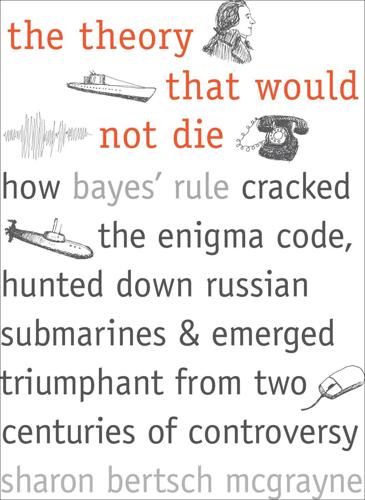
The Theory That Would Not Die: How Bayes' Rule Cracked the Enigma Code, Hunted Down Russian Submarines, and Emerged Triumphant From Two Centuries of Controversy
by
Sharon Bertsch McGrayne
Published 16 May 2011
As a result, the only large computerized Bayesian study of a practical problem in the public domain during the Bayesian revival of the 1960s was the Mosteller–Wallace study of The Federalist in 1964. It would be 11 years before the next major Bayesian application appeared in public. And after Tukey stopped consulting for NBC in 1980, it would be 28 years before a presidential election poll utilized Bayesian techniques again. When Nate Silver at FiveThirtyEight.com used hierarchical Bayes during the presidential race in November 2008, he combined information from outside areas to strengthen small samples from low-population areas and from exit polls with low response rates. He weighted the results of other pollsters according to their track records and sample size and how up to date their data were.
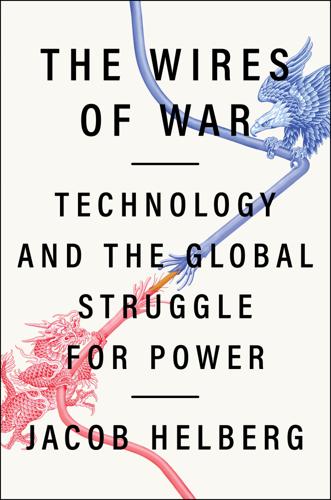
The Wires of War: Technology and the Global Struggle for Power
by
Jacob Helberg
Published 11 Oct 2021
* * * By sheer coincidence, I became a Googler the day before Donald Trump was elected president. The night of November 8, I watched the election returns with a small group at the offices of a friend’s tech firm. The pundits had predicted a slam dunk election for Hillary. Like most people who took Nate Silver’s projections as gospel, I believed them. Peter Thiel was just about the Valley’s lone voice predicting—and championing—Trump’s success. But as state after state unexpectedly went red for Trump, I became more and more concerned. I kept telling myself that Hillary could still win. I was still clinging to that slender hope at 11:40 p.m., when CNN flashed the banner headline “Clinton Calls Trump to Concede Election.”4 Most of my friends watched in disbelief.

Invisible Women
by
Caroline Criado Perez
Published 12 Mar 2019
In fact the number of flexible workers in the US fell between 2015 and 2016 and several major US companies are rescinding their remote work policies.112 In the UK half of employees would like to work flexibly, but only 9.8% of job ads offer flexible working113 – and women in particular who request it report being penalised. Companies also still seem to conflate long hours in the office with job effectiveness, routinely and disproportionately rewarding employees who work long hours.114 This constitutes a bonus for men. Statistician Nate Silver found that in the US, the hourly wage for those working fifty hours or more – 70% of whom are men – has risen twice as fast since 1984 as hourly pay for those working a more typical thirty-five to forty-nine hours per week.115 And this invisible male bias is exacerbated in certain countries by tax systems that exempt overtime hours from tax116 – a bonus for being unencumbered117 that contrasts sharply with the tax relief on domestic services being trialled in Sweden.118 The long-hours bias is particularly acute in Japan where it is not unusual for employees to stay in the office past midnight.

More Everything Forever: AI Overlords, Space Empires, and Silicon Valley's Crusade to Control the Fate of Humanity
by
Adam Becker
Published 14 Jun 2025
There’s no known material that is both light enough and strong enough in long strands to form the cable necessary to create a space elevator on Earth. There is also some reason to think that no such material could exist. v The poorest countries don’t contribute much to global GDP, so global GDP doesn’t reflect harm done to the residents of those countries, many of which are extremely vulnerable to climate change. In 2009, Nate Silver calculated that you could kill over 40 percent of the population of the world—nearly three billion people—and global GDP would only drop by 5 percent. The fact that this kind of mega-genocide is a rounding error in global GDP is just one of many reasons that GDP isn’t a good measure of harm done to humanity, not to mention harm done to other animals, plants, and the rest of the natural world. 6 Where No One Has Gone Before When I was a kid, I thought Star Trek was a documentary about the future.
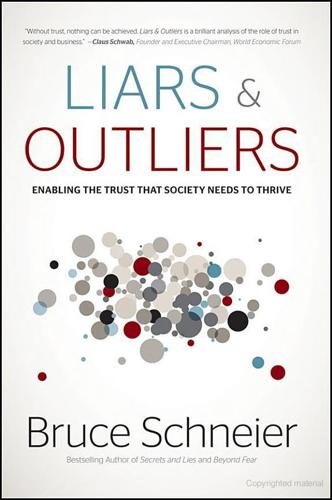
Liars and Outliers: How Security Holds Society Together
by
Bruce Schneier
Published 14 Feb 2012
strip-search every Electronic Privacy Information Center (10 Mar 2011), “DHS: We Have the Authority to Routinely Strip-Search Air Travelers,” press release. Electronic Privacy Information Center (15 Jul 2011), “Federal Appeals Court: TSA Violated Federal Law, Must Take Public Comment on Body Scanners,” press release. EPIC v. DHS (15 Jul 2011), Opinion, Case No. 10N1157. DC Circuit Court of Appeals, filed November 1, 2010. September 11 attacks Nate Silver (4 Jan 2010), “The Skies Are as Friendly as Ever: 9/11, Al Qaeda Obscure Statistics on Airline Safety,” FiveThirtyEight.com. scale is too large Bruce Schneier (2008), “Seven Habits of Highly Unsuccessful Terrorists,” Wired News. Max Abrams (2008), “What Terrorists Really Want,” International Security, 32:78–105.
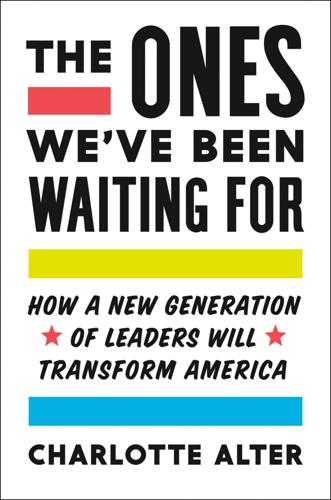
The Ones We've Been Waiting For: How a New Generation of Leaders Will Transform America
by
Charlotte Alter
Published 18 Feb 2020
to weaken environmental regulations: Website of Senator Edward Markey, Report of the Senate Climate Change Task Force, “The Most Anti-Climate Administration in History,” n.d., markey.senate.gov/imo/media/doc/ANTI-CLIMATE%20REPORT%20.pdf. sixty-one in the Senate: “The 115th Congress Is Among the Oldest in History,” Quorum, n.d., quorum.us/data-driven-insights/the-115th-congress-is-among-the-oldest-in-history/175/. Republicans in the House: Nate Silver and Dhrumil Mehta, “Both Republicans and Democrats Have an Age Problem,” FiveThirtyEight, April 28, 2014, fivethirtyeight.com/features/both-republicans-and-democrats-have-an-age-problem/. hearing were an average: Emily Stewart, “Lawmakers Seem Confused About What Facebook Does—And How to Fix It,” Vox, April 10, 2018, vox.com/policy-and-politics/2018/4/10/17222062/mark-zuckerberg-testimony-graham-facebook-regulations.
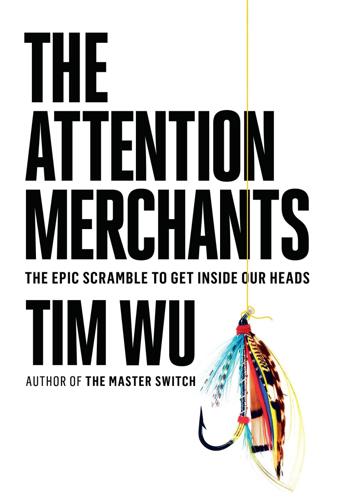
The Attention Merchants: The Epic Scramble to Get Inside Our Heads
by
Tim Wu
Published 14 May 2016
For additional statistics on and details about The Huffington Post’s growth, see Michael Shapiro, “Six Degrees of Aggregation: How The Huffington Post Ate the Internet,” Columbia Journalism Review, June 2012, http://www.cjr.org/cover_story/six_degrees_of_aggregation.php. 8. As quoted in Joseph Turow, The Daily You (New Haven, CT: Yale University Press, 2011), 117. Nate Silver, “The Economics of Blogging and The Huffington Post,” New York Times, February 12, 2011, http://fivethirtyeight.blogs.nytimes.com/2011/02/12/the-economics-of-blogging-and-the-huffington-post/; Bill Keller, “All the Aggregation That’s Fit to Aggregate,” New York Times Magazine, March 10, 2011, http://www.nytimes.com/2011/03/13/magazine/mag-13lede-t.html?
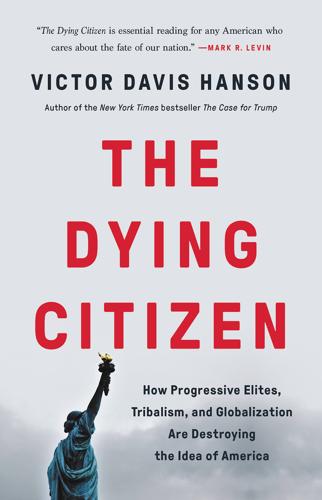
The Dying Citizen: How Progressive Elites, Tribalism, and Globalization Are Destroying the Idea of America
by
Victor Davis Hanson
Published 15 Nov 2021
On the sometimes bizarre politics of opposition to or support for the Electoral College, see Ben Adler, “Would the National Popular Vote Advantage Red-State Republicans?,” American Prospect, January 9, 2009, https://prospect.org/article/national-popular-vote-advantage-red-state-republicans. 11. Electoral College trends: Nate Silver, “Will the Electoral College Doom the Democrats Again?,” FiveThirtyEight, November 14, 2016, https://fivethirtyeight.com/features/will-the-electoral-college-doom-the-democrats-again. 12. On the simplicity of the Electoral College in comparison to electoral systems in Europe: Allen Guelzo, “In Defense of the Electoral College,” National Affairs, no. 34 (winter 2018), www.nationalaffairs.com/publications/detailin-defense-of-the-electoral-college. 13.

The Impossible Climb: Alex Honnold, El Capitan, and the Climbing Life
by
Mark Synnott
Published 5 Mar 2019
Alex wasn’t glowing and animated like I’d seen him after other big successful days—too much hadn’t gone well for everyone. But he was more chatty than usual, and a question I’d been pondering came to mind. He had read three books in Taghia. Open, The Push (Tommy’s autobiography that he shared with Alex in real time via thumb drive as he was writing it at the gîte), and The Signal and the Noise by Nate Silver. Somehow, he had also found time to watch at least three seasons of Spartacus. The Signal and the Noise is all about statistical probability and why most predictions fail. In the book, Silver explains what he calls the prediction paradox: “The more humility we have about our ability to make predictions, the more successful we can be in planning for the future.”
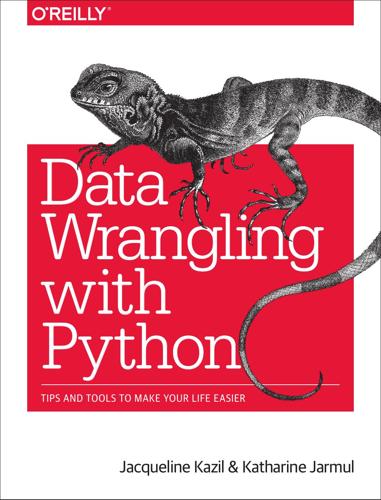
Data Wrangling With Python: Tips and Tools to Make Your Life Easier
by
Jacqueline Kazil
Published 4 Feb 2016
If you don’t yet have a passion for a particular field or dataset, you’ll want to discover ways to continue your progress and advancement as a data wrangler with new fields of study. There are many great data analysts out there writing inspirational stories. Here are a few: • FiveThirtyEight, once a blog started by Nate Silver for The New York Times, is now a site with numerous writers and analysts investigating a variety of topics. After the Ferguson grand jury decision to not indict Darren Wilson, FiveThir‐ tyEight published an article showing the outcome was an outlier. With controver‐ sial topics, being able to show a data trend or tendency can help take some of the emotions out of the story and reveal what the data is actually saying. • A study of income gaps by The Washington Post used tax and census data to con‐ clude the “ol’ boy network” was still alive in terms of job acquisition and initial salaries, but usually flattened or showed no correlation after those initial jobs were acquired. • We’ve studied some of the impacts of groups in Africa who use child labor, including for mining conflict minerals.

Data and Goliath: The Hidden Battles to Collect Your Data and Control Your World
by
Bruce Schneier
Published 2 Mar 2015
Stewart (2011), Terror, Security, and Money: Balancing the Risks, Benefits, and Costs of Homeland Security, Oxford University Press, chap. 9, http://books.google.com/books? id=l1IrmjCdguYC&pg=PA172. it’s well past time to move beyond fear: I even wrote a book with that title. Bruce Schneier (2003), Beyond Fear: Thinking Sensibly about Security in an Uncertain World, Wiley, http://books.google.com/books/about/? id=wuNImmQufGsC. shift in Americans’ perceptions: Nate Silver (10 Jul 2013), “Public opinion shifts on security-liberty balance,” Fivethirtyeight, New York Times, http://fivethirtyeight.blogs.nytimes.com/2013/07/10/public-opinion-shifts-onsecurity-liberty-balance. Our personal definitions of privacy: New York University law professor Helen Nissenbaum argues that privacy can only be properly understood in terms of context and expectations.
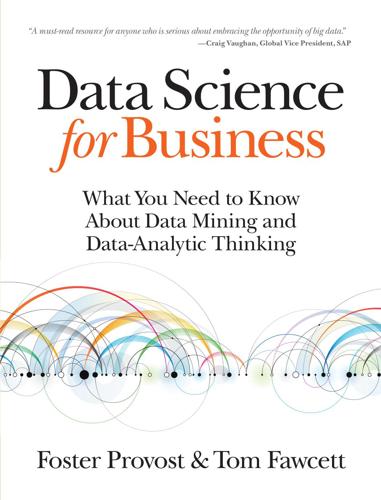
Data Science for Business: What You Need to Know About Data Mining and Data-Analytic Thinking
by
Foster Provost
and
Tom Fawcett
Published 30 Jun 2013
However, beating a random model may be easy (or may seem easy), so demonstrating superiority to it may not be very interesting or informative. A data scientist will often need to implement an alternative model, usually one that is simple but not simplistic, in order to justify continuing the data mining effort. In Nate Silver’s book on prediction, The Signal and the Noise (2012), he mentions the baseline issue with respect to weather forecasting: There are two basic tests that any weather forecast must pass to demonstrate its merit: It must do better than what meteorologists call persistence: the assumption that the weather will be the same tomorrow (and the next day) as it was today.

Robot Rules: Regulating Artificial Intelligence
by
Jacob Turner
Published 29 Oct 2018
See Anna-Louise Taylor, “Why Infanticide Can Benefit Animals”, BBC Nature, 21 March 2012, http://www.bbc.co.uk/nature/18035811, accessed 1 June 2018. 100For proposals along these lines, see Oren Etzioni, “How to Regulate Artificial Intelligence”, The New York Times, 1 September 2017, https://www.nytimes.com/2017/09/01/opinion/artificial-intelligence-regulations-rules.html, accessed 1 June 2018. 101Director of Public Prosecutions, “Suicide: Policy for Prosecutors in Respect of Cases of Encouraging or Assisting Suicide”, February 2010, updated October 2014, https://www.cps.gov.uk/legal-guidance/suicide-policy-prosecutors-respect-cases-encouraging-or-assisting-suicide, accessed 1 June 2018. 102As we explore in later chapters, the theoretical ability for AI to avoid human bias does not obviate the need to ensure that those humans originally programming AI or providing their seed data sets do not accidentally or intentionally imbue AI with human fallibilities or prejudice. 103Luciano Floridi, “A Fallacy that Will Hinder Advances in Artificial Intelligence”, The Financial Times, 1 June 2017, https://www.ft.com/content/ee996846-4626-11e7-8d27-59b4dd6296b8, accessed 1 June 2018. See also Nate Silver, The Signal and the Noise: Why So Many Predictions Fail—But Some Don’t (London: Penguin, 2012), 287–288. 104Philippa Foot, The Problem of Abortion and the Doctrine of the Double Effect in Virtues and Vices (Oxford: Basil Blackwell, 1978) (the article originally appeared in the Oxford Review, Number 5, 1967). 105See Judith Jarvis Thompson, “The Trolley Problem”, Yale Law Journal, Vol. 94, No. 6 (May, 1985), 1395–1415. 106In this book, the terms “self-driving” and “autonomous” when used in relation to vehicles refer to the delegation by humans of certain decision-making functions featuring in driving.
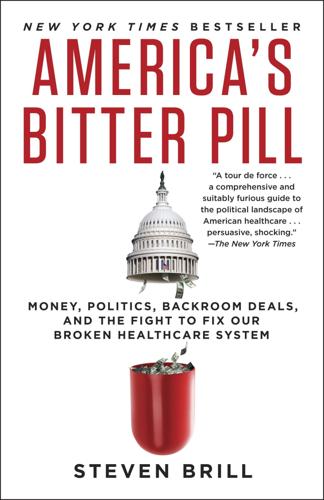
America's Bitter Pill: Money, Politics, Backroom Deals, and the Fight to Fix Our Broken Healthcare System
by
Steven Brill
Published 5 Jan 2015
Even Jeanne Lambrew—who was supposed to be the White House official overseeing the website build—agreed that Simas’s work was what the launch was all about: “When I hear the conventional wisdom about Obamacare,” she told the Post, “this is the difference between the Karl Roves who put their fingers to the wind and the Nate Silvers of the world who looked at the numbers.” Implementing President Obama’s most important domestic policy seemed to be all about campaigning, not about governing. The officials at CMS and HHS whom I interviewed during the summer of 2013 were similarly focused. I was regaled with stories about the demographic targeting being done.

Not Working: Where Have All the Good Jobs Gone?
by
David G. Blanchflower
Published 12 Apr 2021
I also found that the Trump-Romney difference was positively correlated with the heavy drinking rate and obesity rates, and negatively correlated with life-expectancy rates. By state the Trump vote is positively correlated with the suicide rate and the incidence of bad mental health. Places that were hurting the most voted for Trump. I report below that disadvantaged communities, on a host of measures, in the UK went for Brexit and in France for Le Pen. Nate Silver (2016) took a list of all 981 U.S. counties with 50,000 or more people based on data from the American Community Survey, and sorted it by the share of the population age 25 and over that had completed at least a four-year college degree. He found that Hillary Clinton improved on President Obama’s 2012 performance in 48 of the country’s 50 most well-educated counties.

Uncontrolled Spread: Why COVID-19 Crushed Us and How We Can Defeat the Next Pandemic
by
Scott Gottlieb
Published 20 Sep 2021
Murray, David Nakamura, Robert Nelsen, Jayne O’Donnell, Paul Offit, Saad Omer, Emily Oster, Michael Osterholm, Caitlin Owens, Sarah Owermohle, Ramesh Ponnuru, Saskia Popescu, Vinay Prasad, Tatiana Prowell, Carl Quintanilla, Megan Ranney, Angela Rasmussen, Christopher Rowland, Philip Rucker, Will Saletan, David Sanger, Nicole Saphier, Sally Satel, Ben Shapiro, David Shaywitz, Michael D. Shear, Marc Siegel, Nate Silver, Andy Slavitt, Tara Smith, Craig Spencer, Jennifer Steinhauer, Sheryl Gay Stolberg, Lena H. Sun, Teena Thacker, Katie Thomas, Derek Thompson, Eric Topol, Zeynep Tufekci, Bob Wachter, Noah Weiland, Nathaniel Weixel, Leana Wen, Lawrence Wright, Ed Yong, Eunice Yoon, Alison Young, and Carl Zimmer, among many others.

Stress Test: Reflections on Financial Crises
by
Timothy F. Geithner
Published 11 May 2014
Their modest returns were still more than the cost of financing them, and they seemed almost bulletproof. Standard & Poor’s estimated a mere 0.12 percent chance that one of its AAA-rated CDOs would fail to pay out over five years—and super-seniors were considered safer than typical AAAs. But as Nate Silver noted in The Signal and the Noise, his excellent book about why many predictions fail, the actual default rate for AAA-rated tranches of CDOs would be 28 percent, more than two hundred times higher than S&P had predicted. Their perceived safety rested on all kinds of flawed assumptions, starting with the notion that housing prices would never fall simultaneously across the country.

Future Crimes: Everything Is Connected, Everyone Is Vulnerable and What We Can Do About It
by
Marc Goodman
Published 24 Feb 2015
On a daily basis, cyber attacks disrupt our financial system, thieves steal billions in intellectual property, foreign nations pilfer our military weapons plans, and hackers share online tips with one another on how to take over the industrial control systems that run everything from power plants to water and sewage treatment facilities. To paraphrase the renowned statistician and editor of the FiveThirtyEight blog, Nate Silver, our current lackadaisical approach to cyber security and the profound technological vulnerabilities before us has been until this point akin to applying sunscreen and claiming it protects us from a nuclear meltdown—wholly inadequate to the scale of the problem. It is time for a stone-cold somber rethinking of our current state of affairs.
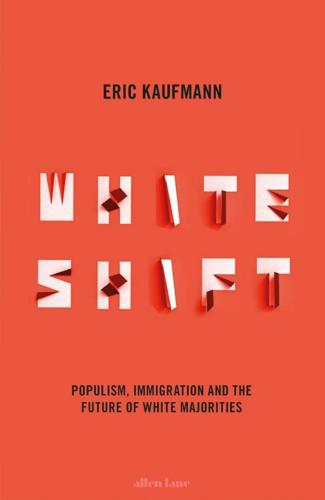
Whiteshift: Populism, Immigration and the Future of White Majorities
by
Eric Kaufmann
Published 24 Oct 2018
None of these items sorts Leavers from Remainers: socialist Corbyn supporters and Greens also tend to agree with them. As with the Trump phenomenon, opposition to a powerful, out-of-touch and wealthy elite does not explain the vote. SOCIAL PSYCHOLOGY AND THE BREXIT VOTE More sophisticated data journalists such as John Burn-Murdoch of the Financial Times in Britain or Nate Silver in the US were astute enough to spot that average education, not income, is the best census predictor of Brexit or Trump support in a district.96 Why education and not income? Education is a signal of worldview, not just material prosperity. Education and income are correlated, but it’s possible to be a successful building contractor with no degree or a penniless graduate.

Four Battlegrounds
by
Paul Scharre
Published 18 Jan 2023
Marine Corps, MCDP 1: Warfighting, 10. 274“I kind of felt powerless”: Christopher Moyer, “How Google’s AlphaGo Beat a Go World Champion,” The Atlantic, March 28, 2016, https://www.theatlantic.com/technology/archive/2016/03/the-invisible-opponent/475611/. 275AI “cannot be defeated”: “(Yonhap Interview) Go Master Lee Says He Quits Unable to Win over AI Go Players,” Yonhap News Agency, November 27, 2019, https://en.yna.co.kr/view/AEN20191127004800315. 275overestimation of Deep Blue’s abilities: Nate Silver, The Signal and the Noise: Why So Many Predictions Fail—but Some Don’t (New York: Penguin Books, February 3, 2015), 277–289. 33. BATTLEFIELD SINGULARITY 276Battlefield Singularity: The chapter title comes from the title of Elsa Kania’s report, Battlefield Singularity. Elsa B. Kania, Battlefield Singularity: Artificial Intelligence, Military Revolution, and China’s Future Military Power (Center for a New American Security, November 28, 2017), https://www.cnas.org/publications/reports/battlefield-singularity-artificial-intelligence-military-revolution-and-chinas-future-military-power. 276higher rate of fire: Stephen Biddle, Military Power: Explaining Victory and Defeat in Modern Battle (Princeton, NJ: Princeton University Press, 2004), 29, https://www.amazon.com/Military-Power-Explaining-Victory-Defeat/dp/0691128022. 277Battle of the Somme: Wikipedia, s.v.

The Meritocracy Trap: How America's Foundational Myth Feeds Inequality, Dismantles the Middle Class, and Devours the Elite
by
Daniel Markovits
Published 14 Sep 2019
For a largely congruent analysis of the sources of Trump’s support using a massive data set of preelection Gallup surveys, see Jonathan Rothwell and Pablo Diego-Rosell, “Explaining Nationalist Political Views: The Case of Donald Trump,” SSRN working paper (November 2, 2016), https://papers.ssrn.com/sol3/papers.cfm?abstract_id=2822059. over Romney’s 2012 results: See Nate Silver, “Education, Not Income, Predicted Who Would Vote for Trump,” FiveThirtyEight, November 22, 2016, accessed July 24, 2018, http://fivethirtyeight.com/features/education-not-income-predicted-who-would-vote-for-trump/. For a similar analysis, see Neera Tanden et al., “Towards a Marshall Plan for America,” Center for American Progress, May 16, 2017, accessed July 24, 2018, www.americanprogress.org/issues/economy/reports/2017/05/16/432499/toward-marshall-plan-america/.